What’s the best eMTB of 2022? To answer this question, we pitted 13 exciting models against each other. They incorporate new technologies, new motors and in some cases huge batteries that will make the 2022 bike season more exciting than ever. But which bike is the right one for you?
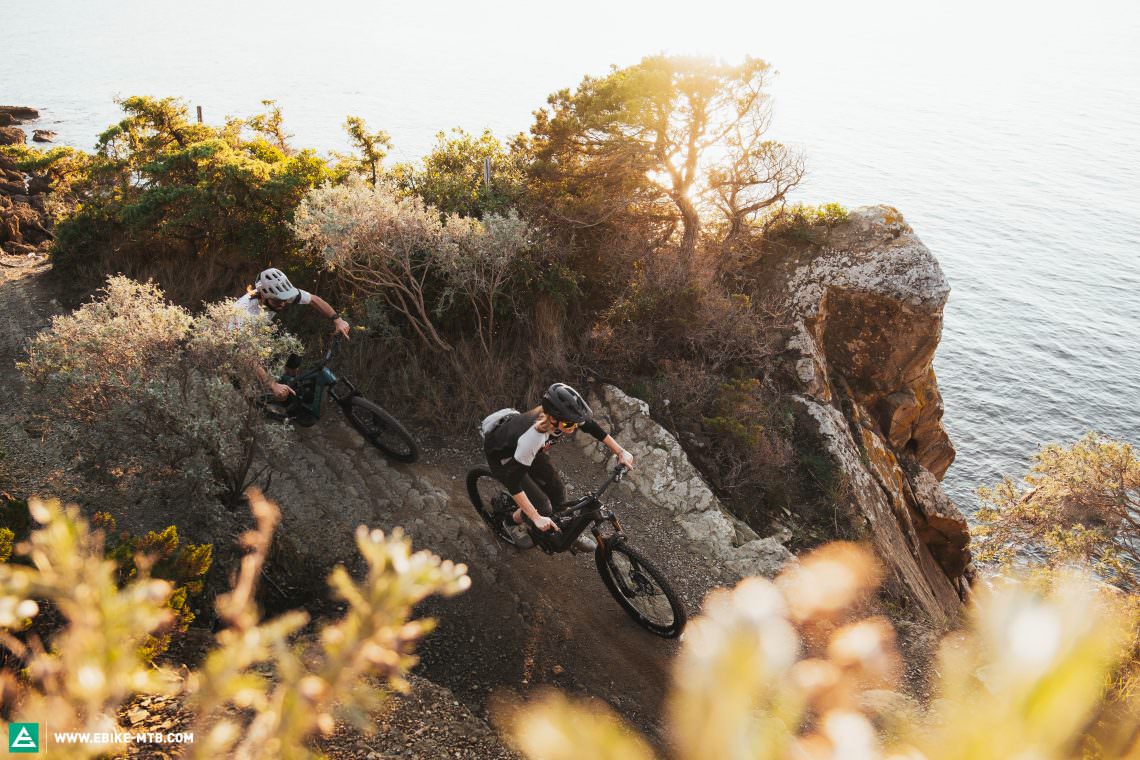
With availability limited and eMTBs a big investment for many, it’s especially important to know about the latest technologies and the huge differences between models before buying one. Nothing is more annoying than the wrong purchase or a bike that bucks, protests or simply doesn’t want to fit your requirements.
For the 2022 season, the bike industry has come up with numerous technical developments as well as exciting new approaches and battery concepts that influence performance and that you have to consider before buying. In our annual group test, in which we search for the best eMTB of the year, we tested and compared the 13 most exciting and hottest eMTBs of the season. From Light eMTBs with limited motor support to powerhouses with plenty of grunt, everything was represented. For 2022, numerous manufacturers present bikes with enormous battery capacities of up to 1,034 Wh and celebrate their increased range. But is more always better? Or is the industry moving in the wrong direction? In this group test, we’re not just looking for the best eMTB of 2022. We also clear up half-truths, examine forum discussions, marketing promises and tell you what really matters. Attention, spoilers ahead: the size or capacity of the battery increasingly determines handling on the trail. And that has serious consequences for how much you’ll enjoy the ride!
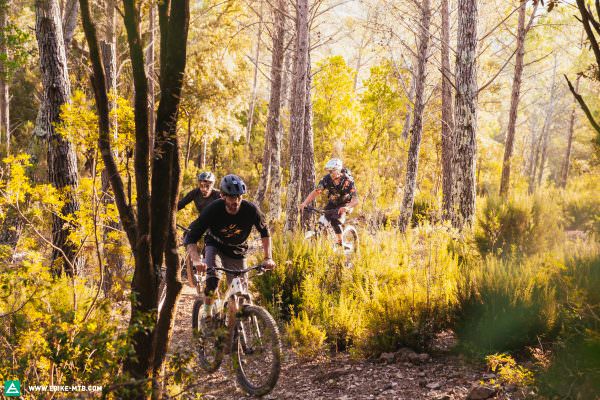
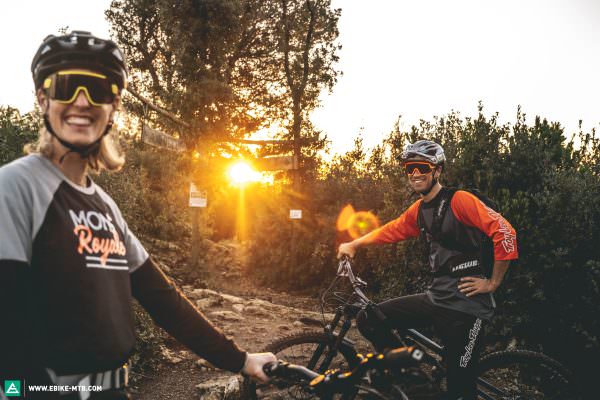
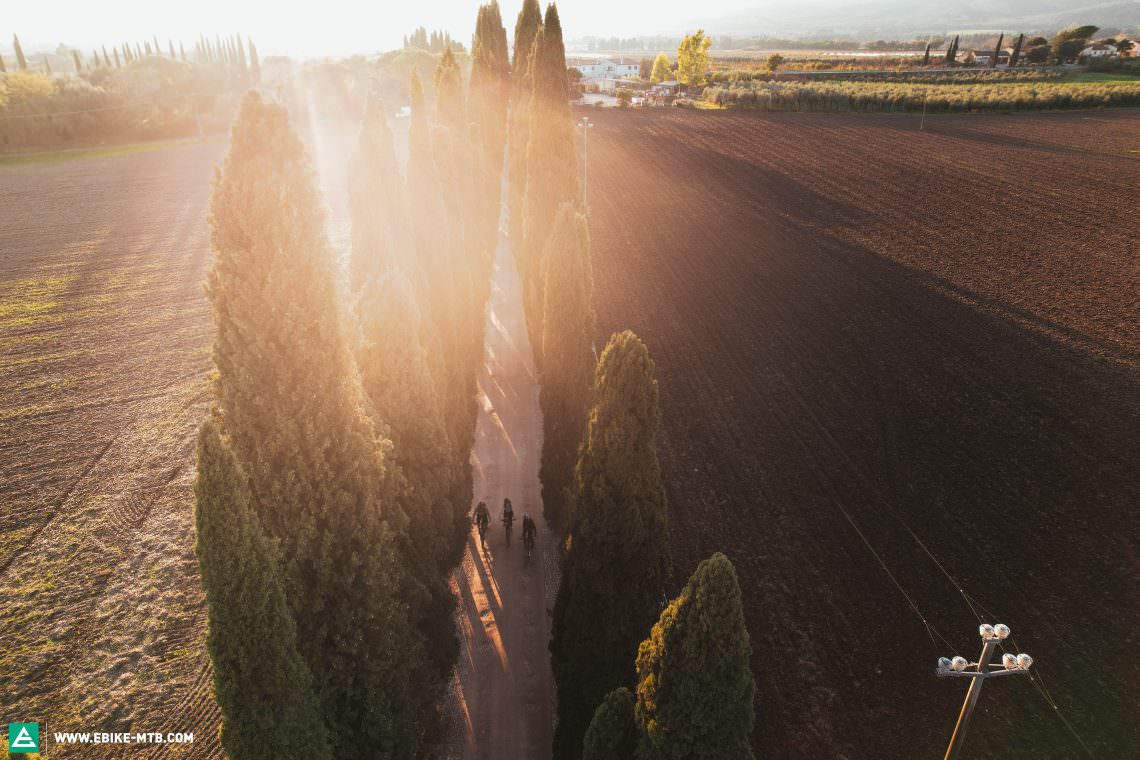
With this group test, we provide answers to the most important questions when buying and help you invest your hard-earned money in the right place and prevent you from making the wrong purchase. So, grab a beer or a cappuccino and enjoy the next pages filled with information, background knowledge, (tech) know-how, tops & flops and the most important tips for newcomers and experts alike. Afterwards, you’ll not just be well equipped for buying an ebike or have even found your dream match, you’ll also have gathered numerous insights and expert knowledge – indispensable for trail talk, the pub and forum discussions!
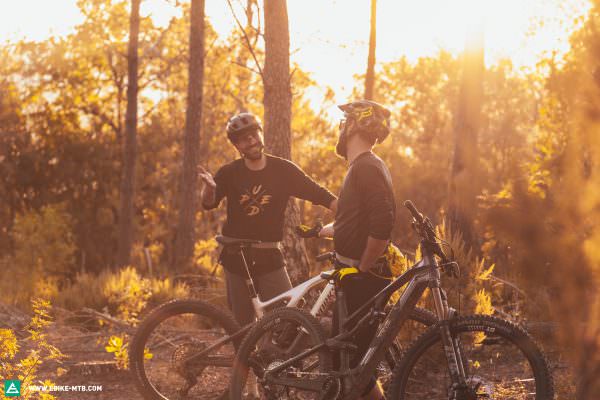

Table of content
- What’s the best eMTB and how do I find it? What does the best eMTB have to be capable of in 2022?
- The group test in figures: Background to the test field, the most exciting facts and interesting trends
- Who are the people lucky enough to test the hottest eMTBs of 2022?
- The pursuit of maximum battery capacity – Is the bike industry moving in the wrong direction?
- What makes a good eMTB and what should I look for in an eMTB?
- What’s the best eMTB of 2021? Tops & flops, winners and losers of the group test
What’s the best eMTB and how do I find it? What does the best eMTB have to be capable of in 2022?
Your personalized buyer’s guide
Are you new here? Welcome! With our years of experience and our comprehensive market overview, our personal buying advice will help you with your purchasing decisions and provide each of you with important information and recommendations.
First of all, a big thank you! As part of our annual reader survey, more than 16,520 E-MOUNTAINBIKERS answered around 90 questions, helping us to make this test as relevant as possible! We don’t just want to test the bikes that interest you the most. We also want to test them in the way you ride and use them in the real world – otherwise our work wouldn’t make any sense.
We have a clear goal: to help you find the right bike for you and your needs.
Even though many eMTBers love to discuss the latest trends and isolated parameters such as wheel size or torque, individual factors are only of limited help in the search for the best eMTB and should be treated with caution. After all, a bike is only as good as the interplay of all its components in the real world!
We are looking for the best all-rounder that can take on any trail! In other words: the best overall package of handling, uphill, downhill and touring performance, design, motor, specs, battery concept and detailed solutions.
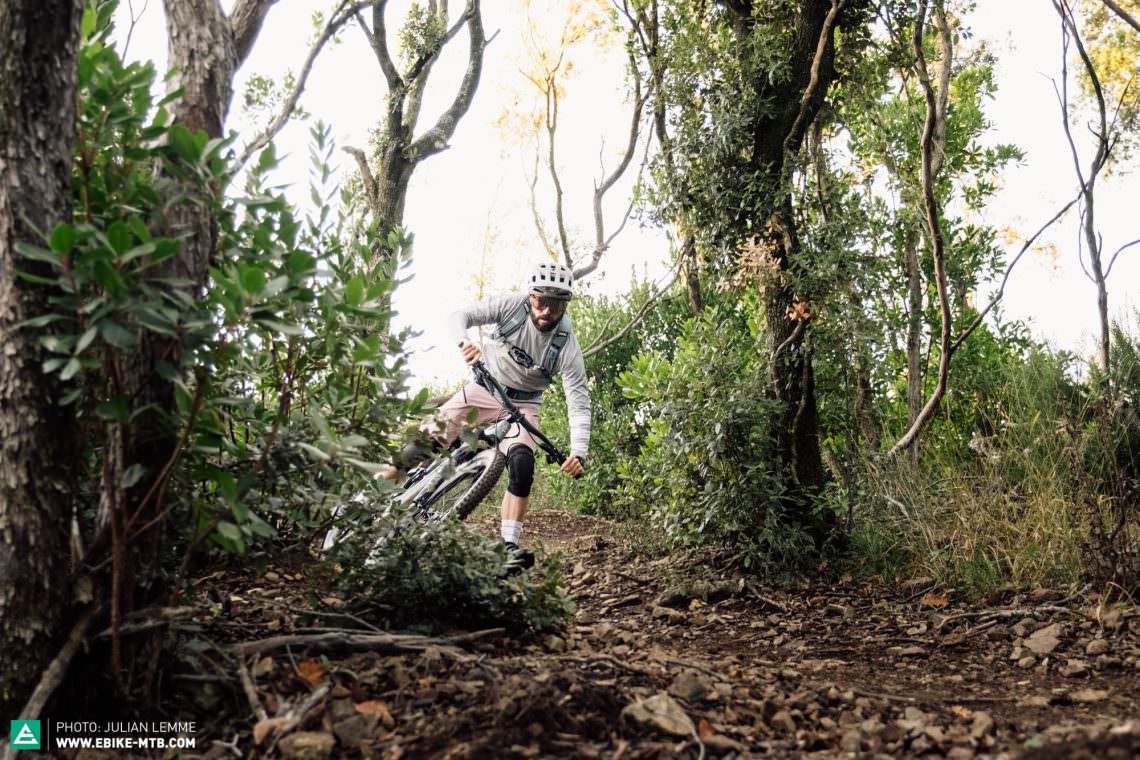
In this group test, we looked for the best trail all-rounder that shines on every trail and delivers the best overall package of handling, uphill, downhill and touring performance, design, motor, specs, battery concept and detailed solutions. Software topics such as connectivity or motor customisation/tuning also played an important role. As you can see, we didn’t make the win quite as easy to determine as it would be in a world championship. Where you can usually win with the fastest time or the most goals, there are many factors that contribute to deciding which bike to buy, and everyone weighs them differently.
Our aim is to work out the individual character of each bike and tell you for whom and to what it is best suited – and what it’s not intended for!
Like every person, every bike has its own character that inevitably embodies both strengths and weaknesses. It is precisely these that we work out clearly and tangibly so that everyone has all the relevant information to make the right purchasing decision for themselves and their personal requirements. For each bike, we have explored the extremes for you and present the real range of use they are suited to.

The test field – 13 exciting eMTBs of 2022
The great diversity that now exists on the market is also reflected in our test field. If you put the specs and marketing slogans aside and examine the characters of each of the bikes, you will find a model for almost every riding style and terrain in this test. In addition to direct and playful bikes for the active riders among us who go into the forest to “play”, there are also comfortable touring bikes that want to convince with plenty of long-distance comfort. There are even models that can compete with downhill-focussed bikes and with which you can hunt Strava KOMs. Among all the specialists, there are also a few true all-rounders that cut a fine figure in almost every situation – these are the contenders for the title of “Best eMTB of 2022”. The bikes in the test field not only differ enormously in their intended use and character but also in their battery concepts. While many manufacturers rely on standard systems from Bosch and Shimano, our test also includes models that want to convince as Light e-MTBs with lower motor power and a modular battery concept i.e. with an optional additional battery. You want a bike that delivers more motor power than a Bosch system? Braaaaaap: this time the test field includes a bike that unrelentingly pulls away from any Bosch or Shimano motor uphill, but also engenders its own pitfalls!
The test field is a real cross-section of the market offering the best, most interesting, exciting and relevant bikes for trail use.
As you can see, we have invited many different bikes. In addition to the options that you expressed an interest for, our know-how and expertise also played a role in the selection, with many exciting new models on the market that contribute to making this test so interesting.
| Bike | Price* | Travel [mm] | Wheel size | Weight [Kg] |
|---|---|---|---|---|
| FOCUS Jam² 7.0 | € 7,799 | 150/150 | 29″ | 25,66 |
| MERIDA eONE-SIXTY 10K | € 9,899 | 160/150 | 29″/27,5″ | 22,98 |
| Norco Sight VLT C1 | € 9,999 | 160/150 | 29″ | 25,52 |
| Orbea Rise M-Team | € 10.155 | 150/140 | 29″ | 20,5*/18,92* |
| Rocky Mountain Altitude Powerplay C70 | € 8,800 | 170/160 | 29″ | 24,50 |
| ROTWILD R.E375 PRO | € 9,499 | 170/160 | 29″ | 19,68 |
| SCOR4060 Z ST XT | € 8,299 | 150/140 | 29 | 22,74 |
| SCOTT Ransom eRIDE 910 | € 7,199 | 180/180 | 29″ | 24,60 |
| Specialized S-Works Turbo Levo | € 15,000 | 160/150 | 29″/27,5 | 22,10 |
| Specialized S-Works Turbo Kenevo SL | 15.000 € | 170/170 | 29″ | 19,9*/18,7** |
| Trek Rail 9.9 XX1 AXS | € 15,000 | 160/150 | 29″ | 23,52 |
| Yeti 160E T1 | € 13,790 | 170/160 | 29″ | 23,14 |
| YT DECOY MX CORE 4 | € 7,499 | 170/165 | 29″/27,5″ | 22,60 |
*with range extender
** without range extender
**** #pandemic #deliverycosts: The massive bike boom and the consequences of coronavirus have resulted in huge challenges for the whole bike industry. As a result, the prices of eMTBs are subject to short-term changes and fluctuations. The prices shown here are as they were at the time of our testing. They may have changed since then.
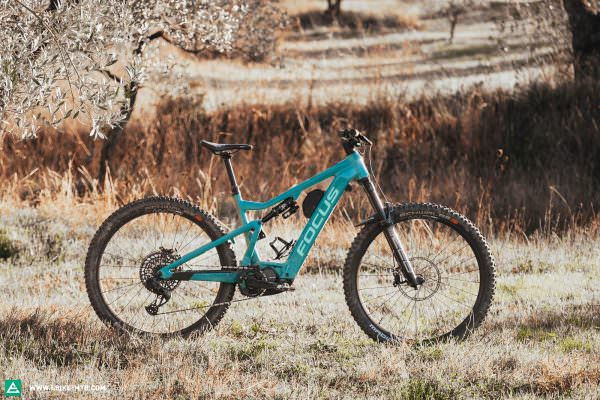
25.66 kg in size L | € 7,799 | Click for review
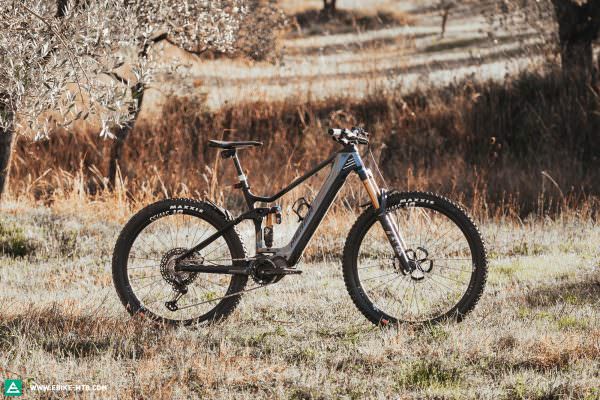
22.98 kg in size L | € 9,899 | Click for review
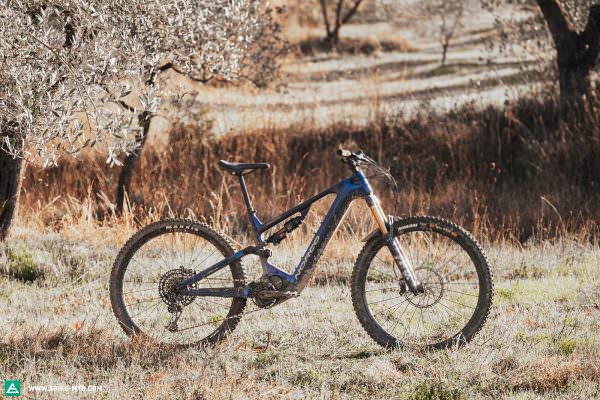
kg in size | € 9,999 | Click for review

20,52 kg in size L | € 10.155 | Click for review
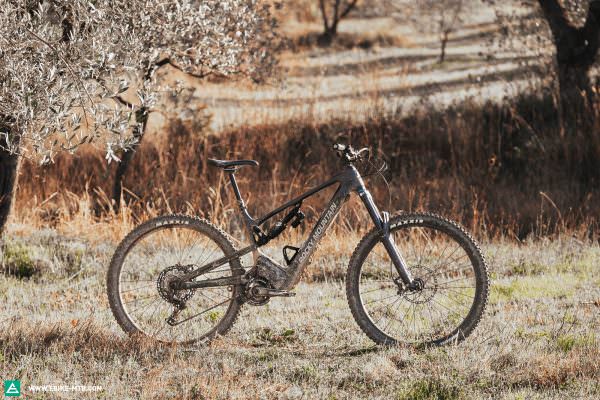
24.5 kg in size L | € 8,800 | Click for review

19,68 kg in size L | 8.999 € | Click for review
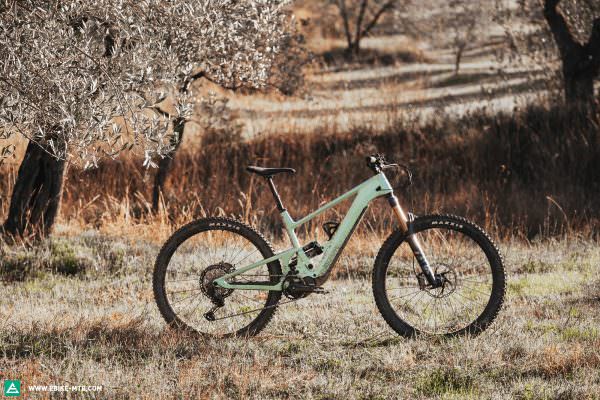
22,74 kg in size L | 8.299 € | Click for review
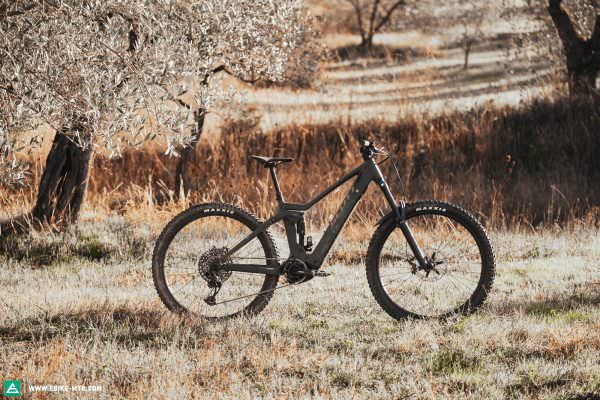
24.60 kg in size L | € 7,199 | Click for review

22.10 kg in size S4 | € 15,000 | Click for review
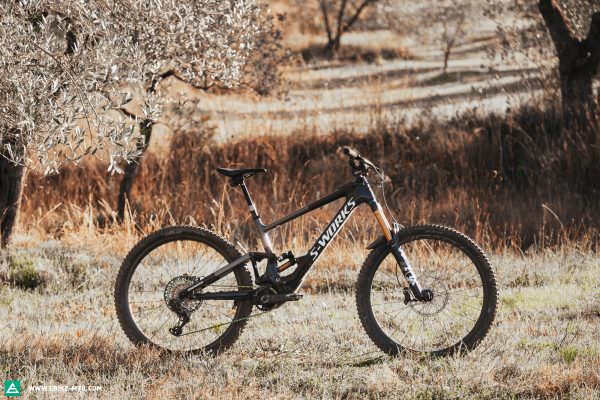
19.9 kg in size S4 | € 15,000 | Click for review
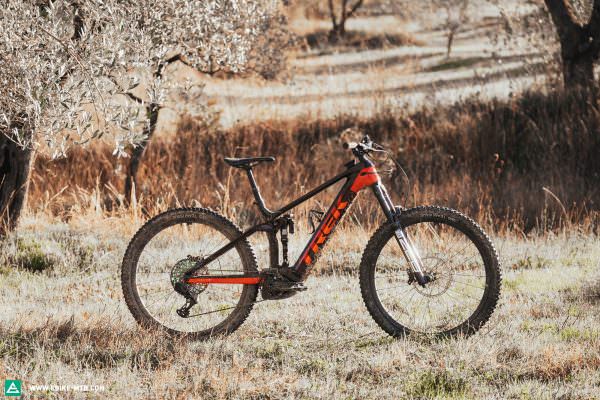
23.52 kg in size L | € 13,599 | Click for review
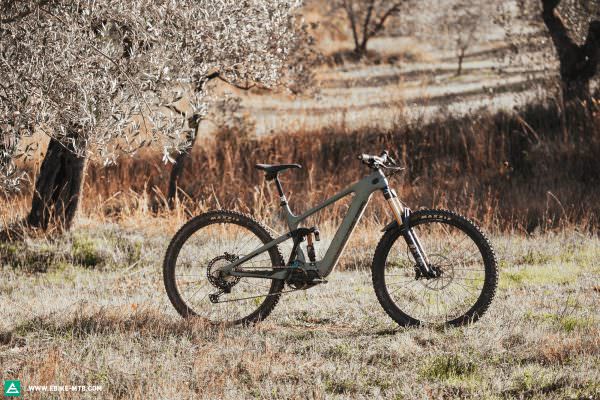
23.14 kg in size L | € 13,790 | Click for review

22.60 kg in size L | € 7,499 | Click for review
An overview of the motor concepts
| Bike | Motor* | Torque (Nm) | Battery capacity (Wh) |
|---|---|---|---|
| FOCUS Jam² 7.0 | Shimano EP8 | 85 | 720 |
| MERIDA eONE-SIXTY 10K | Shimano EP8 | 85 | 630 (504 size XS) |
| Norco Sight VLT C1 | Shimano EP8 | 85 | 900 |
| Orbea Rise M-Team | Shimano EP8-RS | 60 | 360 + 252 |
| Rocky Mountain Altitude Powerplay C70 | Dyname 4.0 | 108 | 720 +314 |
| ROTWILD R.E375 PRO | Shimano EP8 | 85 | 375 |
| SCOR4060 Z ST XT | Shimano EP8 | 85 | 720 |
| SCOTT Ransom eRIDE 910 | Bosch Performance Line CX | 85 | 625 |
| Specialized S-Works Turbo Levo | Specialized 2.2 | 90 | 700 |
| Specialized S-Works Turbo Kenevo SL | Specialized SL 1.1 | 35 | 320 +160 |
| Trek Rail 9.9 XX1 AXS | Bosch Performance Line CX | 85 | 750 (625 size S) |
| Yeti 160E T1 | Shimano EP8 | 85 | 630 |
| YT DECOY MX CORE 4 | Shimano EP8 | 85 | 540 |
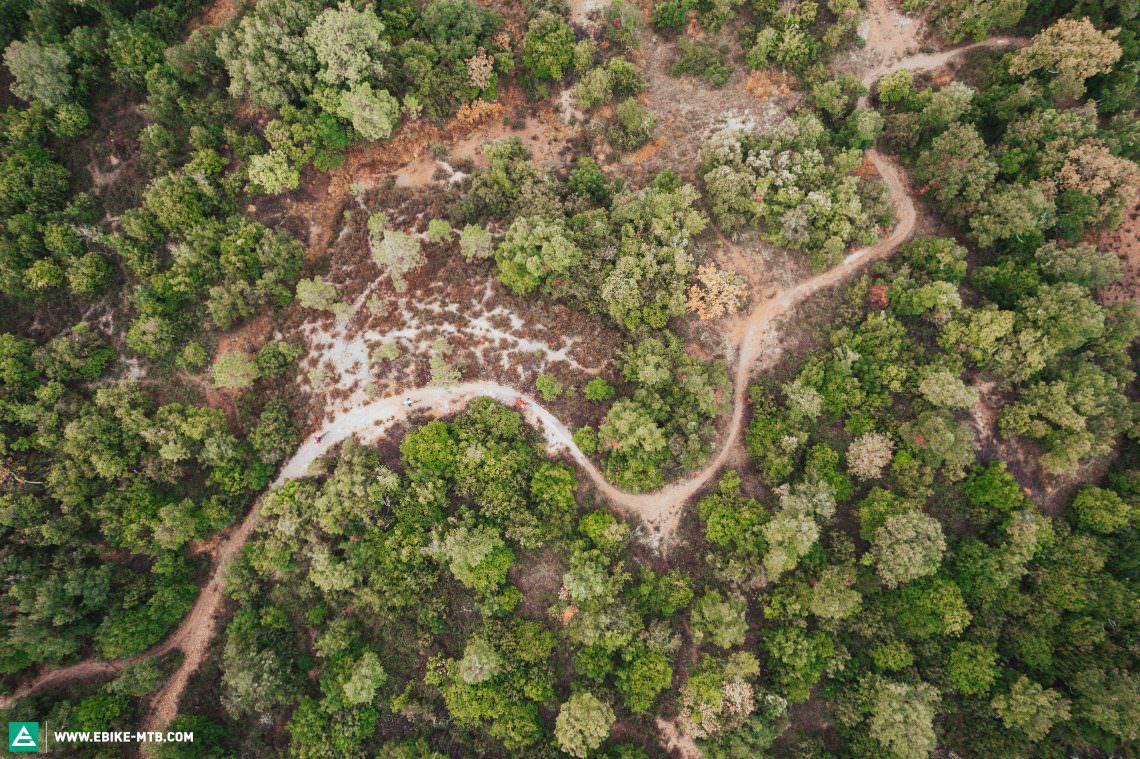
Why aren’t BULLS, CUBE or Haibike included?
Our reader survey showed that three brands are particularly interesting and important to you: Specialized, Haibike and CUBE. That’s why we invited two bikes from each of these manufacturers to the group test. However, due to current production and delivery difficulties, some manufacturers, including Haibike, CUBE and BULLS were unable to provide a bike. In general, availability still poses major challenges for the industry in 2022. If you want to know more about what has caused this, you can find all the information here. Some bikes have been previously featured in our group tests due to multi-year development cycles, but how much sense does it make to test a bike like the Cannondale Moterra Neo for the umpteenth time if nothing has changed except for small details in the spec with a successor likely due to replace it soon anyway? We don’t re-invite such bikes every time. Exceptions are last year’s test winners and best buys. If your favourite brand isn’t included, that’s no reason to throw in the towel. Maybe we’ve tested it previously, maybe an exciting successor will be introduced this year, or maybe it will soon be available again and end up in one of our next tests.
Why are there only eMTB fullys in the test?
EMTB fullys aren’t just at the spearhead of eMTB development, offering more fun and safety than hardtails, they are also most in demand. 89% of our reader survey participants plan to buy a full suspension bike, and we think that’s a very sensible decision. Most eMTB hardtails simply aren’t made for the trails!
Why are the ebikes from this group test so expensive?
At the start of the new season, we test the highlight bikes of the new season to find the best eMTB of the year. Price plays a subordinate role because, understandably, manufacturers debut the most exciting technologies and concepts in their flagship models. But that doesn’t mean that all bikes have to be expensive.
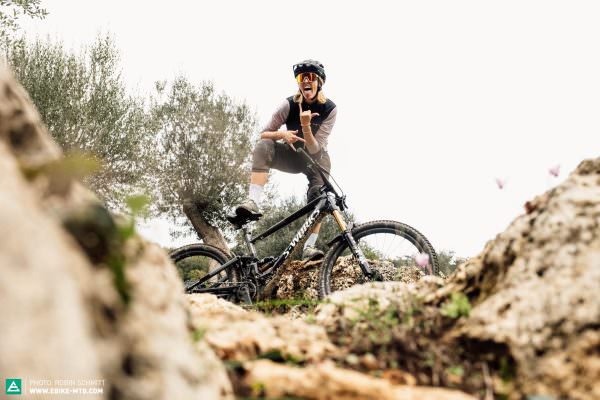
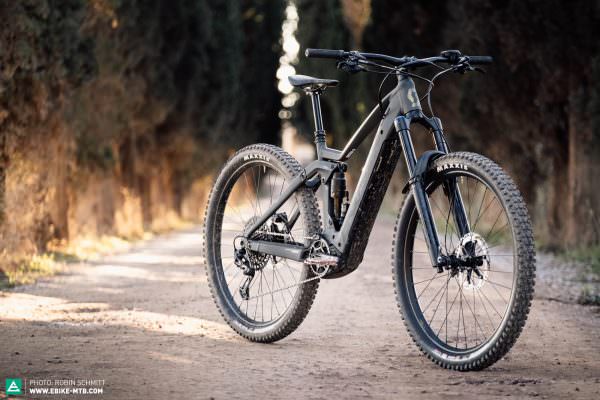
At the beginning of the new season we test the flagship bikes of the year and price plays a subordinate role. In issue #029 of our digital magazine you will find a group test of more affordable models.
The price range in the test field is wide but this doesn’t mean that the differences in performance are just as great. The cheapest bike in the test field, the SCOTT Ransom eRIDE 910, costs € 7,199 and enters the race as the reigning Best Buy from last year. The two most expensive bikes in the test field, the Specialized S-Works Turbo Levo and Specialized S-Works Turbo Kenevo SL, cost € 15,000 each. The good news for all price-conscious buyers: in our next issue, we will have a group test of cheaper models.
Part 2: The group test in figures: Background to the test field, the most exciting facts and interesting trends
Dry, boring, complicated: numbers have a bad reputation. But if you compare them in a meaningful way, they provide exciting insights into trends and developments. We gathered the most interesting facts from the test field for you and compared them with last year’s test.

Price:
- Average price in 2021 group test: € 8,846
- Average price in 2022: € 10,464
- 4 bikes cost more than €13,000
- Most expensive bike in the 2021 group test: Specialized S-Works Levo/Levo SL for € 13,999
- Most expensive bike in the 2022 group test: Specialized S-Works Levo/Kenevo SL for € 15,000
- Cheapest bike 2021: FOCUS JAM² 6.9 NINE for € 5,499
- Cheapest bike 2022: SCOTT Ransom eRIDE 910 for € 7,199
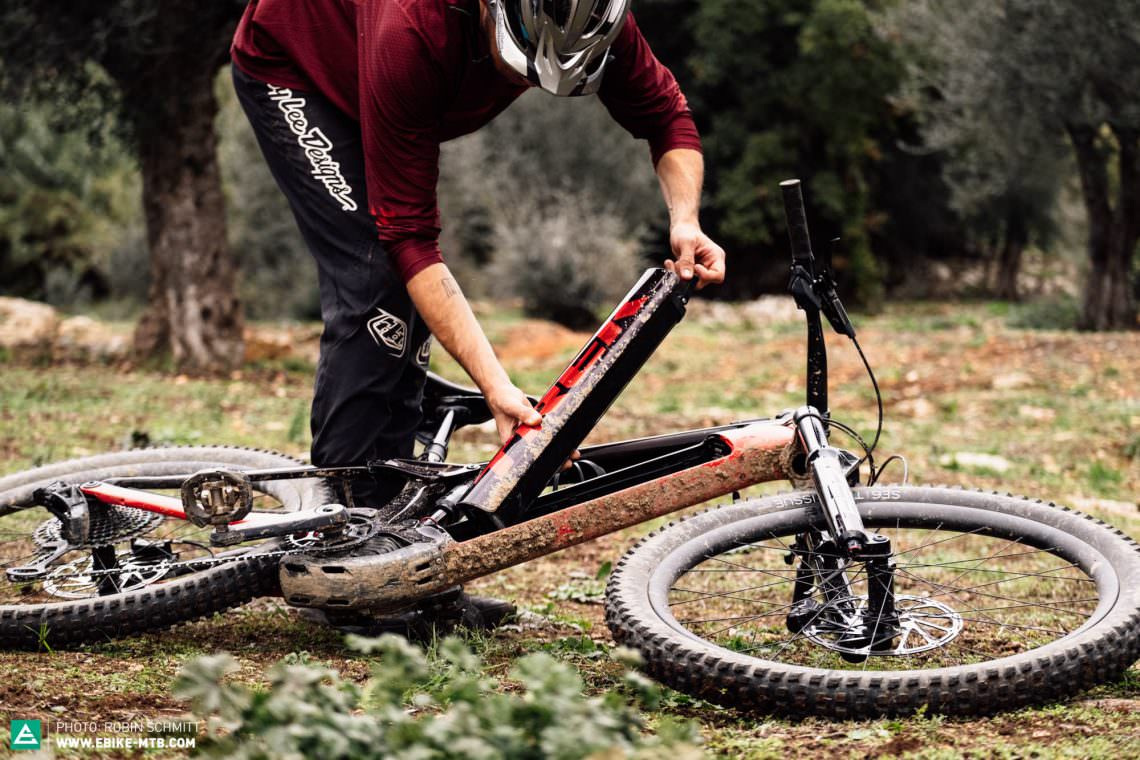
Battery and battery capacity:
- The bikes have an average 668 Wh battery capacity, 60 Wh more than last year. That’s almost 10%!
- The Norco Sight VLT C1 has the largest internal battery capacity at 900 Wh.
- 2 Bikes 2 bikes rely on a small battery with 320 to 360 Wh and an additional range extender.
- Only 2 of 13 bikes have a battery lock. The rest manage without a key.
- 2 out of 8 Shimano bikes also rely on Shimano batteries. . 6 bike manufacturers rely on third-party battery manufacturers or have developed their own solutions.
- The lightest bike weighs 18.7 kg and the heaviest 25.7 kg.
- On average, the bikes weigh 22.9 kg. . Last year it was 23.2 kg.
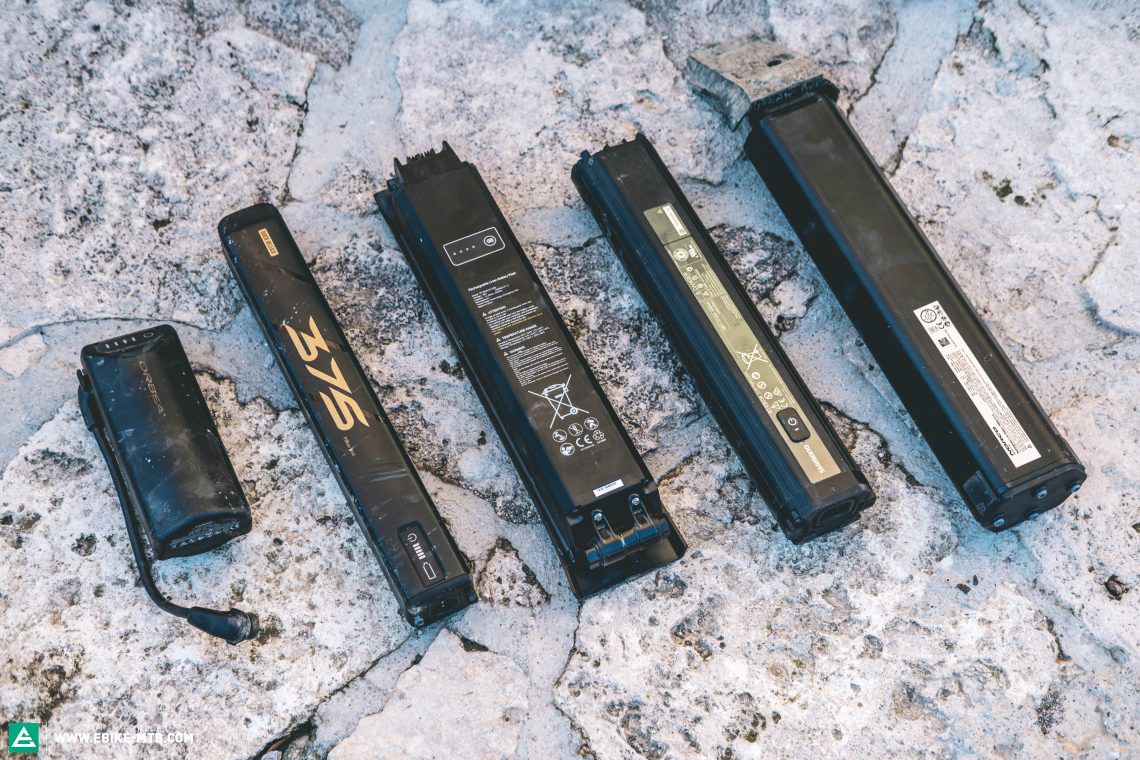
Motor systems:
- Bosch: 2 x
- The fact that only 2 Bosch-equipped bike are represented in the test field is due to the limited availability of Bosch bikes with the new Smart System at the time of the test and the fact
that the new motor system is currently only available with a large 750 Wh battery. - One of the bikes uses the old Bosch 2021 system.
- The other has the new Smart System 2022, which is also based on the Bosch Performance Line CX motor.
- Shimano: 8 x
- Specialized: 2 x
- Dyname 4.0: 1 x
The motors have an average torque of 81 Nm. The most powerful motors delivers 108 Nm of torque, the weakest just 35 Nm. That said, lots of power isn’t necessarily better, as you will read further on.

Suspension:
- Which brands are used and how often?
- FOX: 11 x
- RockShox: 2 x
- The bikes have an average of 163 mm travel at the front and 155 mm at the rear.
- When it comes to suspension forks, 10 out of 13 manufacturers rely on models with 38 mm stanchions such as the RockShox ZEB and FOX 38.
Wheel sizes: 27.5″ eMTBs are dead!
- 77 % of the bikes in the test use 29″ wheels front and rear.
- 23 % of the models mix 29” and 27.5” wheels front and rear.
- 0 % of the bikes roll on 27.5" wheels front and rear.



- 10 people spent 9 days in Tuscany, including sun, sea, awesome trails, arm pump and dolce vita.
- Our test crew munched on 300+ pieces of pizza.
- We emptied 17 bottles of Vino Rosso at the joint dinners, namely the Avvoltore 2015 from our friends at Morisfarms.
- 12 bottles of Vino Bianco were also included, namely Morisfarms AMOR.

Part 3: Who are the people lucky enough to test the hottest eMTBs of 2022?
How did we test the bikes? Which routes and trails did we ride? Who are the people behind the testing and what do they look for in their perfect bike? Read this chapter for the answers as well as a summary of our test philosophy and our opinion on school grades for bike tests.
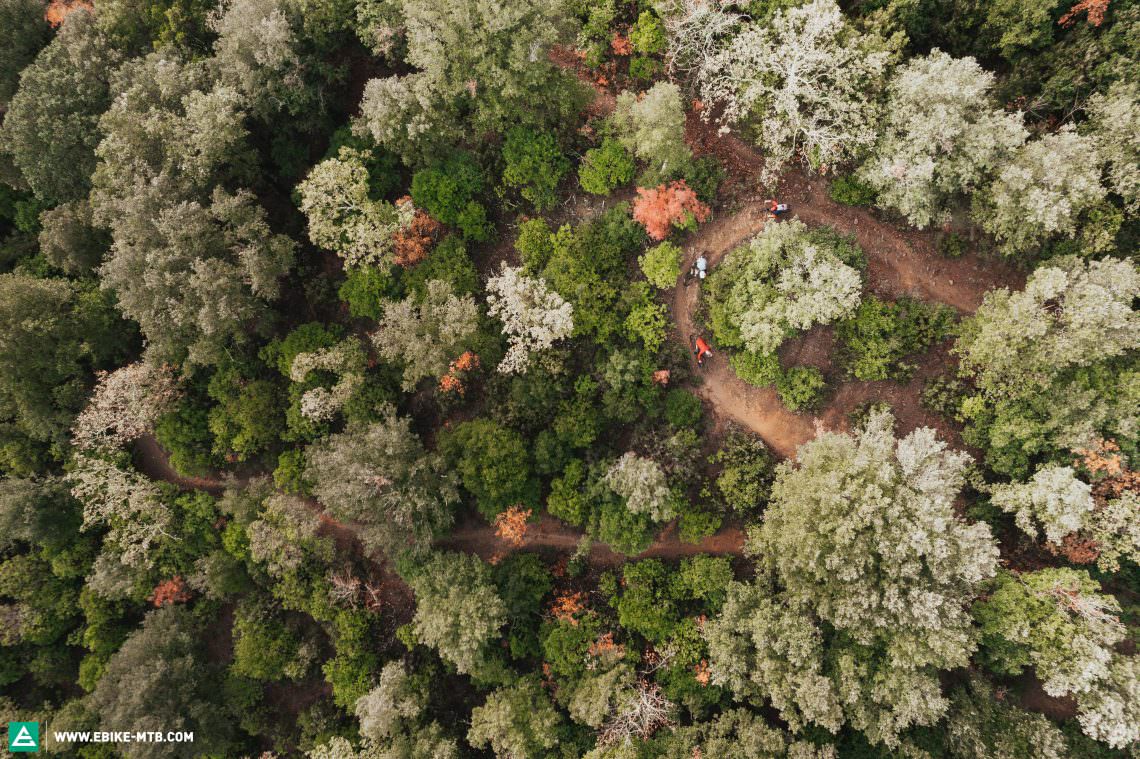
The test track(s)
For us, stone-baked pizza, a fresh ocean breeze and good espresso are just as much part of a successful day on the bike as flow on varied singletrack, the occasional adrenaline spike and high-fives at the end of the trail. While this might sound like a vacation, it’s a lot of hard work too! However, we’re very fortunate that we get to work where others go on holiday, i.e. Tuscany, staying in the bike hotel Massa Vecchia. The trail network around Monte Arsenti provides the ideal test conditions, allowing us to work out both the big and small differences that separate the 13 eMTBs on test.

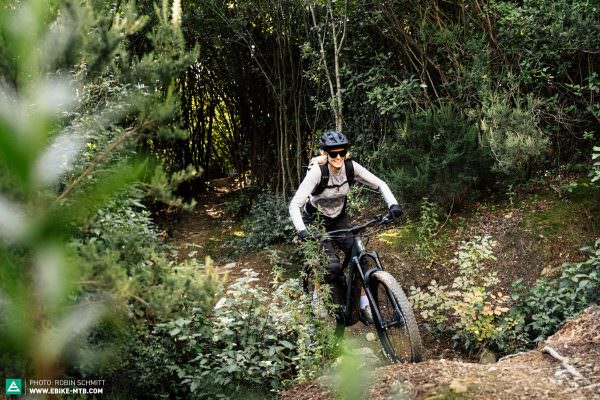
We planned the test route based on your preferred riding style and terrain as indicated in our reader survey of over 16,000 participants. The super varied route included steep climbs and descents, winding, straight, technical and easy sections. We rode on doubletrack and woodland paths with obstacles of all kinds going both up- and downhill. The conditions were just as varied, ranging from wet and slick to dry and grippy. Rock gardens, roots, jumps, berms, open corners and high-speed berms – we had everything we needed to test the bikes’ capabilities in different situations. They also had to prove themselves over longer term testing on our home trails around Stuttgart and in the Allgäu Alps.
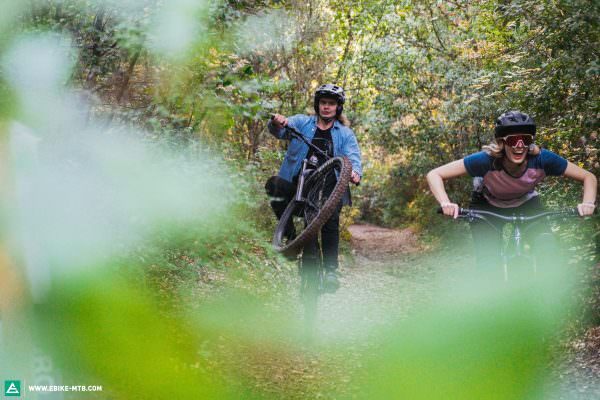
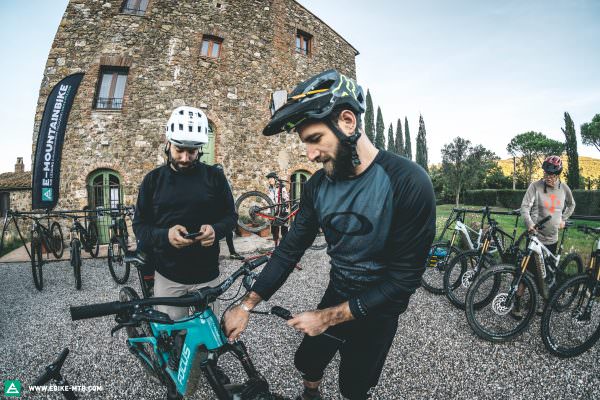
The test team
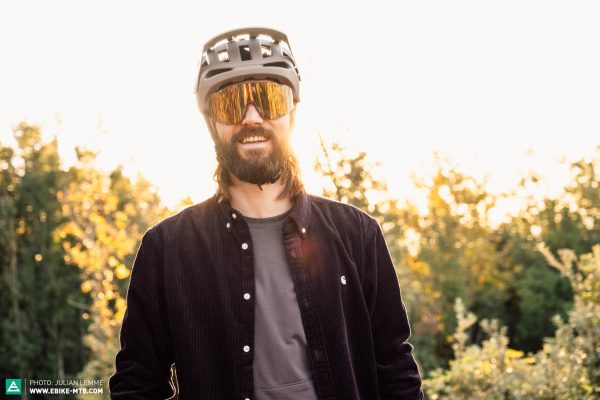
EMTBs have gone mainstream! That means that we’re seeing many newcomers on eMTBs and that the bikes are being used in new ways. Fortunately, the technology has come so far that many eMTBs are versatile enough to cater to an extremely wide range of uses. A good all-rounder has to perform just as well on relaxed tours as it does on demanding trails or in everyday life – for all types of riders and skill levels. As such, it’s incredibly important to me that bikes are as balanced, user-friendly and versatile as possible.

I love charging down the most challenging trails in record time, being the first to sip an espresso at the café bar! This requires balanced, confidence-inspiring handling. For that, I’ll gladly compromise on the size of the battery, making up for the missing capacity with my legs. For optimal downhill performance, I tune the suspension in every way possible. Adjusting the excellent FOX GRIP2 damper is a complex task with its four settings, but FOX offer good recommendations for a baseline setup.

I’m wary of people who haven’t got a folder for bike and suspension apps on their smartphones. I prefer tuning my bike digitally, allowing me to find the exact motor setting that best suits my riding style and planned route. Are electronic suspension and sensors like the AirWiz and TireWiz necessary? They are cool but sometimes very expensive gimmicks, though they can also offer advantages when used correctly. However, more technology usually also means there’s more stuff to go wrong – it’s up to you to decide whether you want that.
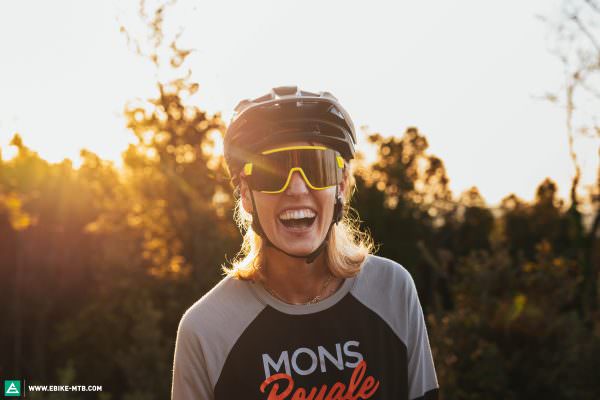
As a future globetrotter with a converted van, I like things to be simple and functional. That applies to both my lifestyle and my bikes. I love a clean cockpit, whether it’s in my van or on my bike, so I prefer internal cable routing and clamps with good ergonomics that can accommodate the shift and brake-levers simultaneously. When I’m exploring new places aboard an ebike, I want to keep my smartphone charged. That’s why I’m a fan of the integrated USB charging socket on the FOCUS, turning the ebike into a giant power bank on wheels!
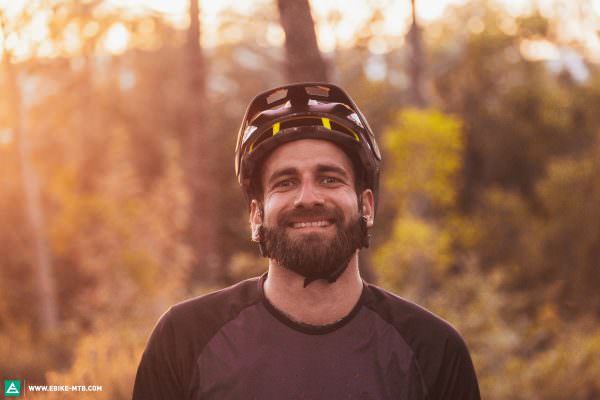
I usually ride without a motor, so I prefer eMTBs to be super agile with a natural ride feel. Even a small amount of motor support is enough for me. As such, I only need a small battery, which offers major benefits for the bike’s handling. For longer rides, I’m a fan of modular battery concepts that allow you to expand the capacity via an external battery that fits into the bottle cage, like on the Specialized Kenevo SL and Orbea Rise. It’s a neat solution to increase the range and I don’t mind carrying water in a hydration bladder in my backpack.
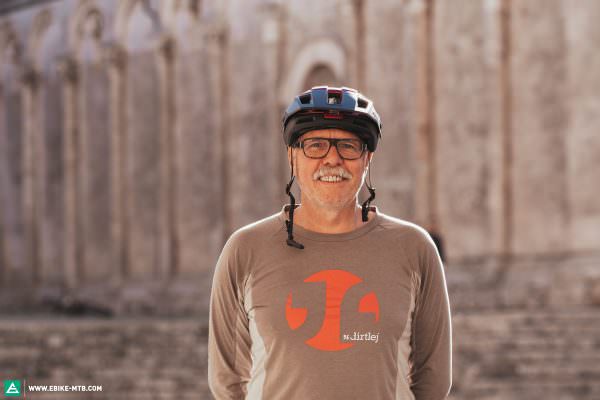
As a touring rider, I want the right bike, not necessarily the best. That doesn’t mean I don’t care about having fun, but not at the cost of everyday practicality. For the tours that my trail dog Henry can’t manage on his own, I pull him in the bike trailer. As such, the bike must be approved to pull a trailer, come equipped with lights and allow me to fit a stand. If the bike can tick these boxes and still be fun, I’m happy..
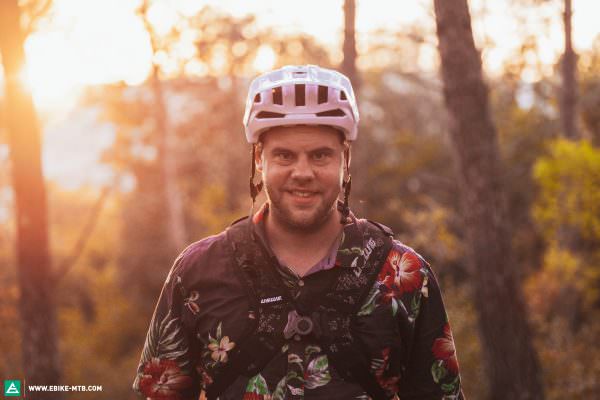
When I ride, I want to have fun, which I do when things get technical. To stay in control, traction is half the battle. Of course, this is largely down to the suspension, but the tires are important too. Because of my considerable weight, I prefer using tires with a thick casing, fitted on aluminium rims. If I slam into a rock and bottom out the tires, aluminium rims just dent, whereas carbon rims often fail.
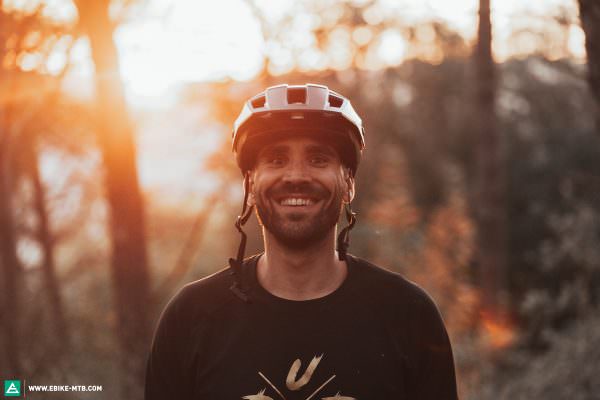
As the team’s walking style guide, I’m all for Danish understatement instead of Berlin hipster-chic. Brands like SCOR have proven that this inconspicuous style is slowly making its way into the bike industry, deliberately avoiding offensive branding or leaving it to the customer. It’s a perfect match for my outfits and just my taste. While looking minimalistic on the outside, the bike should still have high tech features like connectivity for syncing data and software updates, so that I’m always up to date.
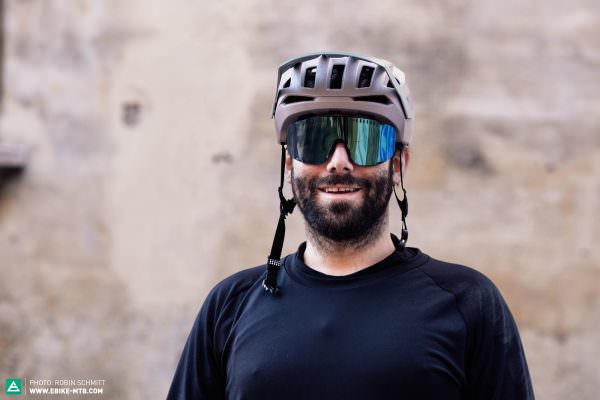
For me, a bike needs to be low maintenance. Durable and robust components lead to fewer breakdowns and longer-lasting fun on the trails! If something does go wrong, I always carry a repair kit. However, I prefer storing it on the bike rather than in a hip bag or backpack. As a new dad, I also want to have the option of mounting a child seat to the top tube or transporting the bike via the rack on my car – an aluminium frame is less sensitive to damage from clamping forces compared to carbon.
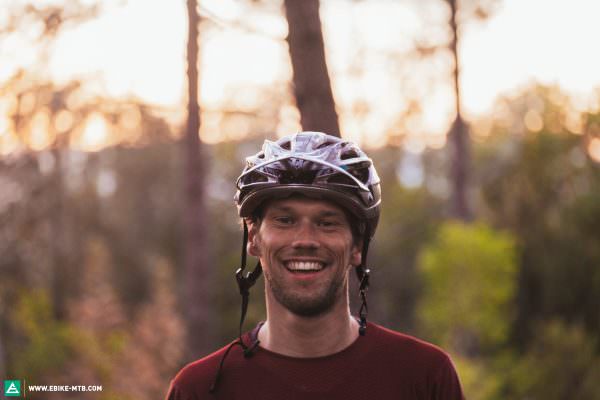
As a graphic designer, I like a sophisticated bike design combined with sensible functionality. We all have our own preferences and tastes, so I think it makes a lot of sense for bike configurators to give you the option of customising the paint job along with the components. Orbea’s user-friendly MyO configurator and Trek’s Project One configurator are good examples of this.
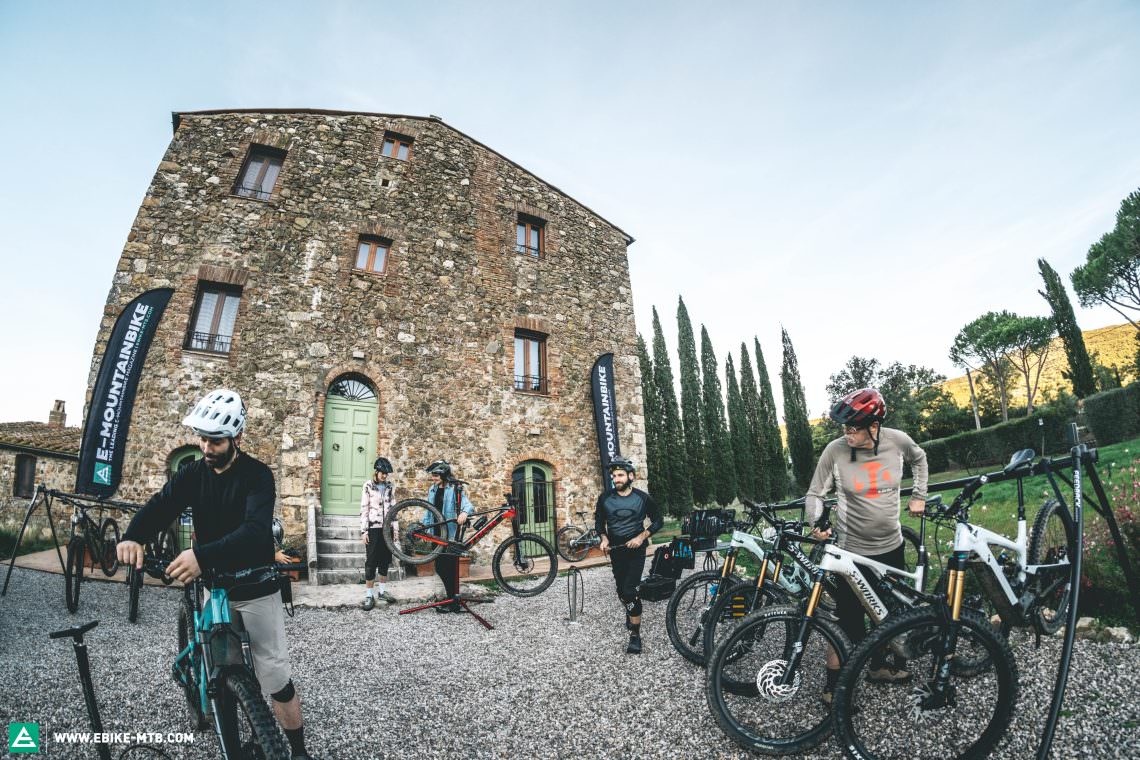
How we tested the bikes – Our test philosophy and criteria: honest instead of simple, differentiated instead of just “brilliant”!
In search of a quick, simple answer to the question of which bike is the best, prospective ebike buyers often get dazzled by advertising superlatives such as the maximum range or the lowest weight, presented as impressive graphics, diagrams, tables and laboratory values. Fortunately, the industry is becoming more and more aware that reality is usually much more complex and that a bike, its capabilities and its characteristics cannot be expressed in numbers alone.

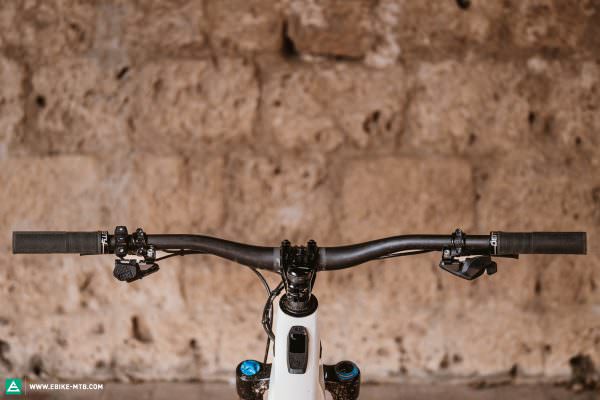
As such, we try to judge the bikes according to their respective strengths and weaknesses in the right context. Based on this information, we let you decide whether the bike suits you and your requirements. We strive to present the character of each bike in a clear and easily understandable way. We think giving points according to a rigid scoring system isn’t the most helpful approach since it oversimplifies this very complex topic and doesn’t do it justice. We believe that every rider has different needs and preferences, and it’s up to you to find out what these are and then choose a bike based on that. Anything else would be misleading and besides being unfair to some brands, we would be patronising our readers.
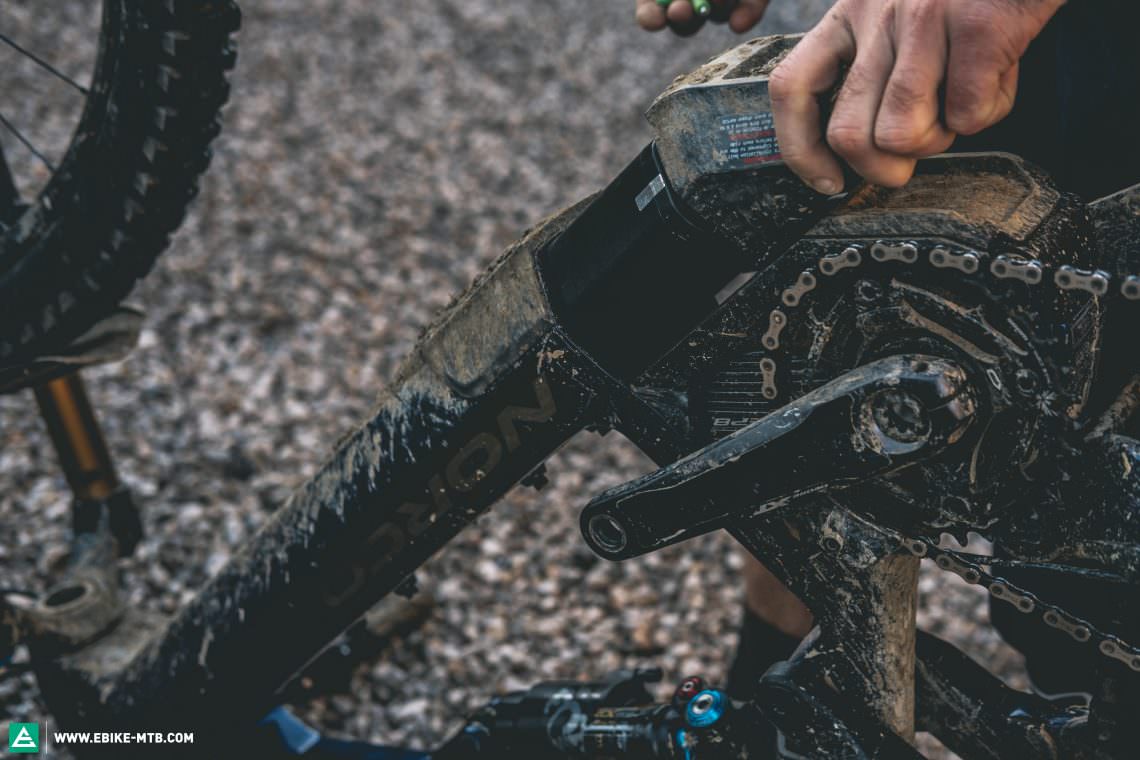
So, the key questions we asked ourselves in this group test were: what type of rider will love this bike? And what type of rider won’t? Each bike review aims to answer these core questions, giving you a clear recommendation or even advising you to look elsewhere. There are sliding scales at the end of each review, giving you a visual representation of the bike’s handling. That way, a glance is all it takes to see whether the bike might be what you’re looking for.
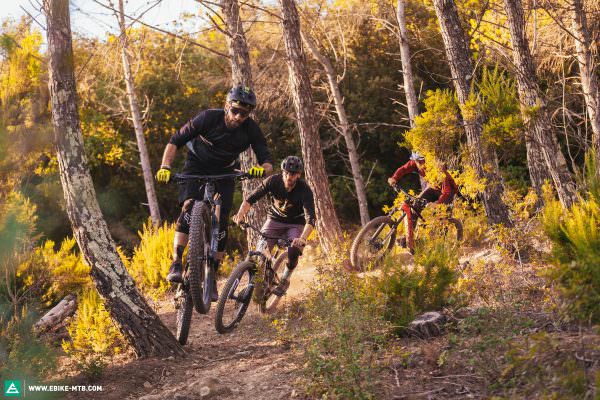
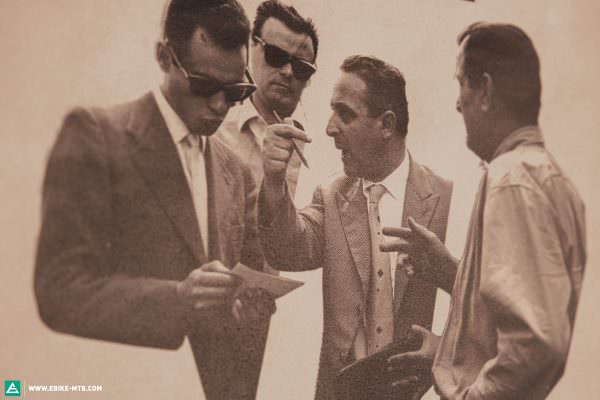
The best eMTBs are able to combine seemingly contradictory characteristics, like being agile yet composed. The higher the ratings on the scales at the end of each review, the better the bike is in these areas. Note, that the ratings can only be compared between bikes in this group test. To make the differences as clear as possible, we use the whole scale. In other words, we go into the test knowing that some bikes will score a ten on the scale for a certain characteristic, whereas others will get zero or just one point for the same characteristic. Our aim is not to slam the brands involved, but rather to make it easier for you to find the right bike. Despite the ratings, the review itself is crucial, because that’s where we explain the bike’s character traits in detail and give you a deeper understanding of the sum of the bike’s parts.
Honestly, not every good (!) eMTB will make you happy. Firstly and most importantly , it has to suit you and your needs.
Five years ago, we explained that that laboratory range measurements aren’t representative of the real world and that the bike industry is yet to find a useful and realistic solution to this. Giving the range as an absolute number would inevitably be incorrect and misleading. Remember, there is no simple answer to the question of, “How far will I be able to ride on a single charge?” We delve deeper into the topic of range and battery capacity in the next chapter.
Part 4: The pursuit of maximum battery capacity – Is the bike industry moving in the wrong direction?
The first consideration for many uninformed ebike buyers is a bike’s range. As a result, an arms race for larger batteries has been taking place for years. But out in the real world, this can backfire and make many bikes worse for trail use. Find out here which approaches actually lead to more trail fun.

When choosing a bike, it’s important to choose a concept that fits your personal requirements. Inevitably, that also includes the battery and motor concept. There are huge differences not only in motor power, but also in battery capacity for bikes that are aimed at similar applications: models like the Specialized Kenevo SL Light eMTB with a 360 Wh battery and 35 Nm torque output, take a different approach with less battery capacity and sometimes less motor power, while manufacturers like Norco, packing 900 Wh, exhaust all possibilities to integrate as much juice into the down tube as possible. If you value easier handling and more riding fun, you have to find the right balance – less is often more. More battery capacity automatically means more weight and, due to the larger dimensions, usually a position that worsens the weight distribution, leading to compromises in handling. Instead of blindly buying the bike with the highest battery capacity, you should ask yourself a few questions:
- How do you ride your eMTB or how do you want to ride it? This is the best way to find out which battery concept suits you.
- How long are your longest rides and how much ascending do you realistically do? Do you run out of juice? And is range really that important to you, or would you rather have good handling on the trail? To help you answer all these questions and more, we present the most important battery concepts in detail in this article.
- How long are your longest rides and how much ascending do you realistically do? Do you run out of juice? And is range really that important to you, or would you rather have good handling on the trail? To help you answer all these questions and more, we present the most important battery concepts in detail in this article.
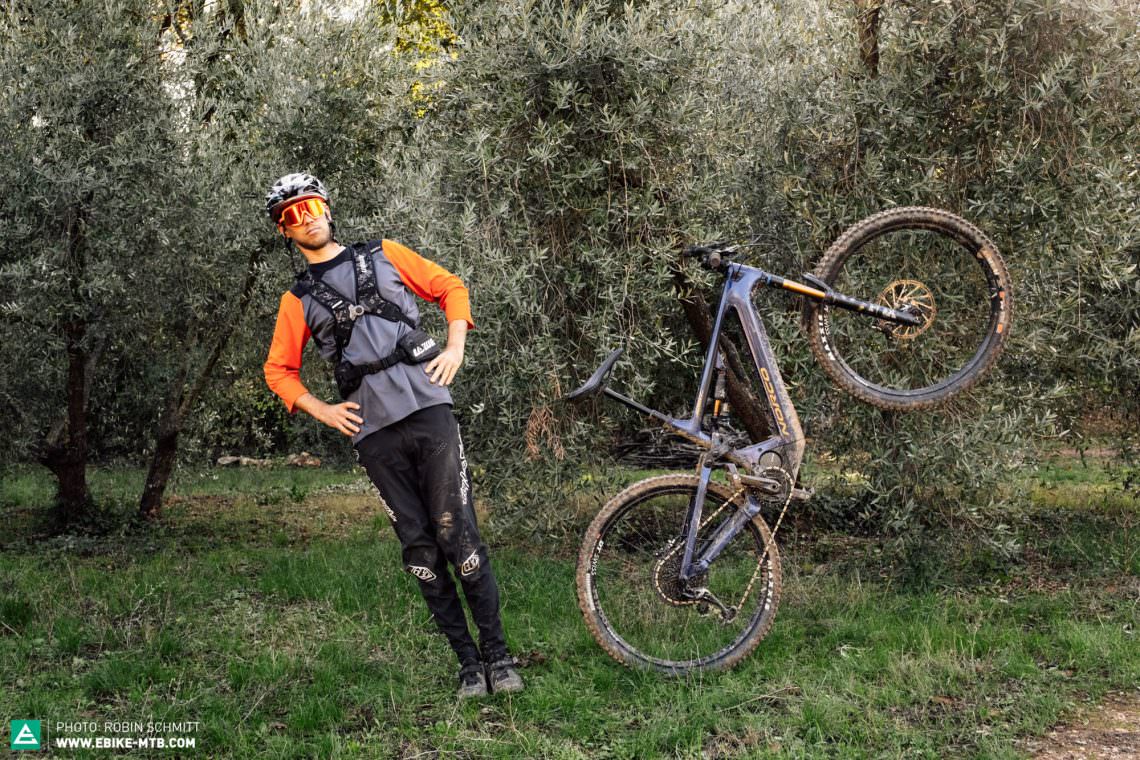
Our group test clearly shows that when it comes to battery capacity, a crucial rule of thumb applies: as little as possible and as much as necessary! You share this opinion: 77% of you stated in our reader survey that a 630 Wh battery is completely sufficient. Batteries with a 600–700 Wh capacity have become firmly established on sporty eMTBs in recent years and hit the sweet spot for most of you. And that’s a good reflection of the market! The bikes with 700+ Wh batteries in this group test all have the same problem: the longer and heavier batteries have a negative impact on handling. In the end, everyone has to decide for themselves which handling compromises they want to accept in favour of more battery capacity. We are convinced that more than 700 Wh in the tank isn’t necessary for a trail all-rounder like the one we are looking for in this test. It makes more sense to have a battery capacity that is linked to the frame size. In such a system, an XL bike would have more battery capacity than a size S or M bike. After all, body size is usually also related to body weight. In the future, we expect to see huge internal battery capacities only on touring and trekking ebikes. When it comes to trail fun, eMTBs with large batteries quickly fall behind.
A Light eMTB downhill with the climbing characteristics of an all-round eMTB uphill? Impossible? No! The Orbea Rise shows how it’s done!

A clever modular concept can be a sensible alternative to a standard system with a 630 Wh battery. Instead of always riding with a large battery capacity and the associated weight, it’s very practical to be able to increase capacity with an additional external battery, whenever you need greater range. Orbea shows how it’s done with the battery and motor concept of the Rise. Thanks to the small internal 360 Wh battery and the additional 252 Wh range extender, which is placed into the bottle cage, weight remains centrally positioned even with a total 612 Wh capacity. The low and central centre of mass is one of the main reasons for the outstanding handling of the Orbea Rise. Despite its reduced torque, the EP8 RS motor provides enough power at high cadences to easily keep up with the standard Shimano or even the current Bosch motor. The difference in torque only becomes noticeable on very steep ramps and when starting and accelerating. Nonetheless, it resoundingly leaves the Specialized SL 1.1 behind on climbs. The lower motor output, throttled down to 60 Nm from the Shimano EP8’s usual 85 Nm, allows for a small 360 Wh battery without a significant reduction in range compared to a Bosch league eMTB. With the range extender, even really long tours are no problem.
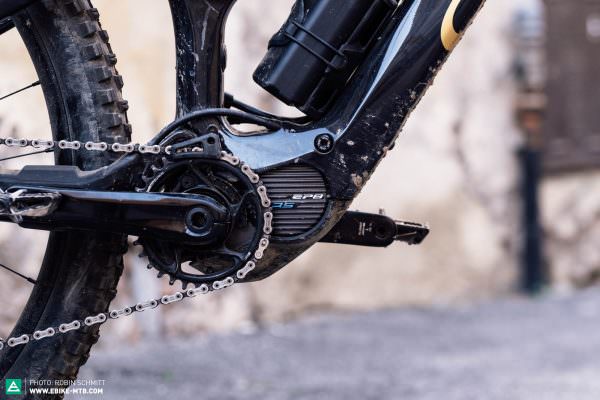
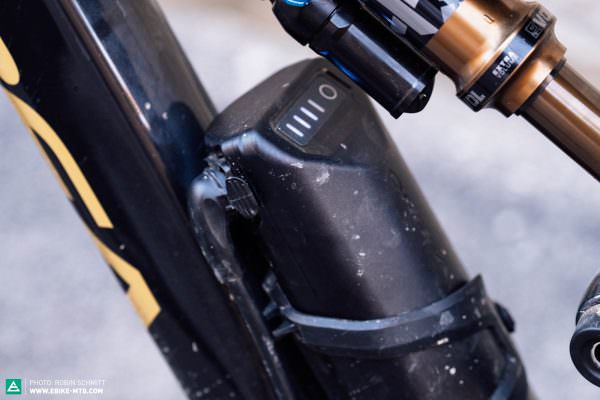
Part 5: What makes a good eMTB and what should I look for in an eMTB?
Want to avoid unpleasant surprises after buying your bike? Then you should pay close attention now! In our search for the all-rounder with the best overall package of handling, motor performance, battery capacity, weight and trail performance, we have also considered the questions you should ask yourself before buying.
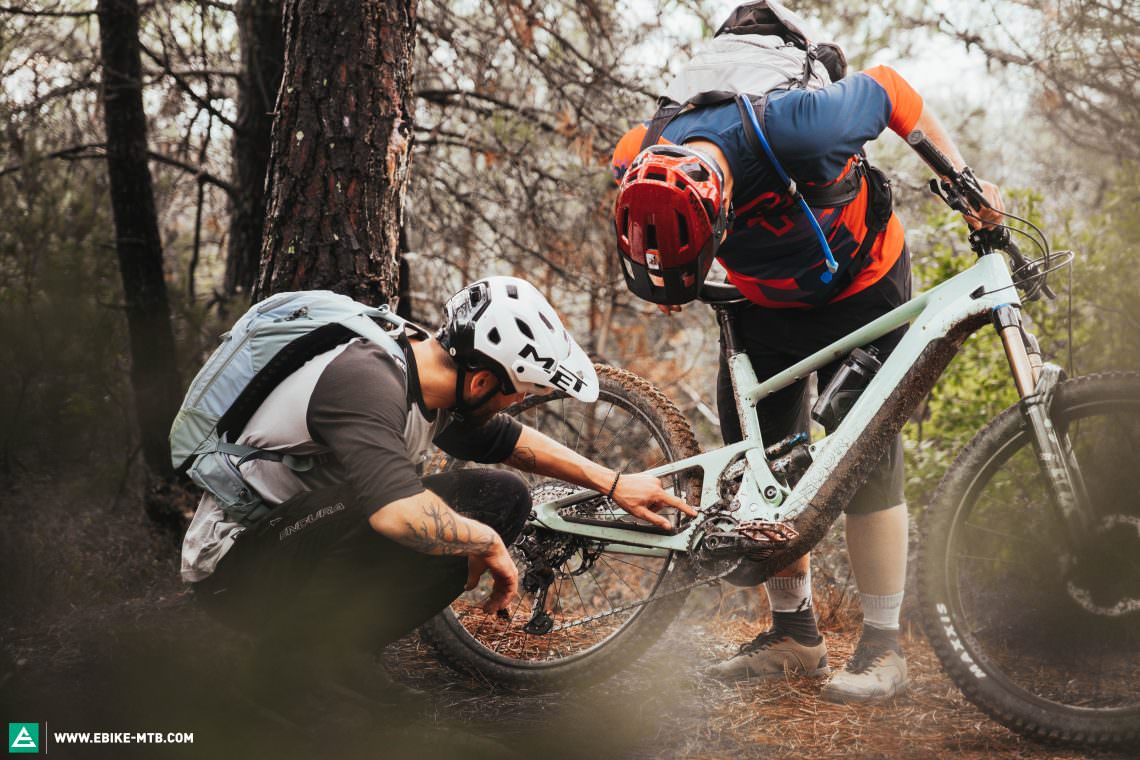
Range, suspension travel or motor power considered in isolation will never tell you whether the bike fits your individual demands and riding style, or whether the overall bike concept works and delivers what it promises. That’s exactly why you need to know not just what you need to pay attention to, but also what is less important.
An eMTB is more than the sum of its parts and the arms race for metrics like battery size, motor power or suspension travel rarely produces better bikes.
In this group test, our aim is not to find the best bike with a certain technical feature or component i.e. the best Bosch bike, the best bike with a 750 Wh battery or the best bike with 150 mm travel and 29″ wheels. We’re much more interested in what really matters. With this in mind: forget about the numbers!
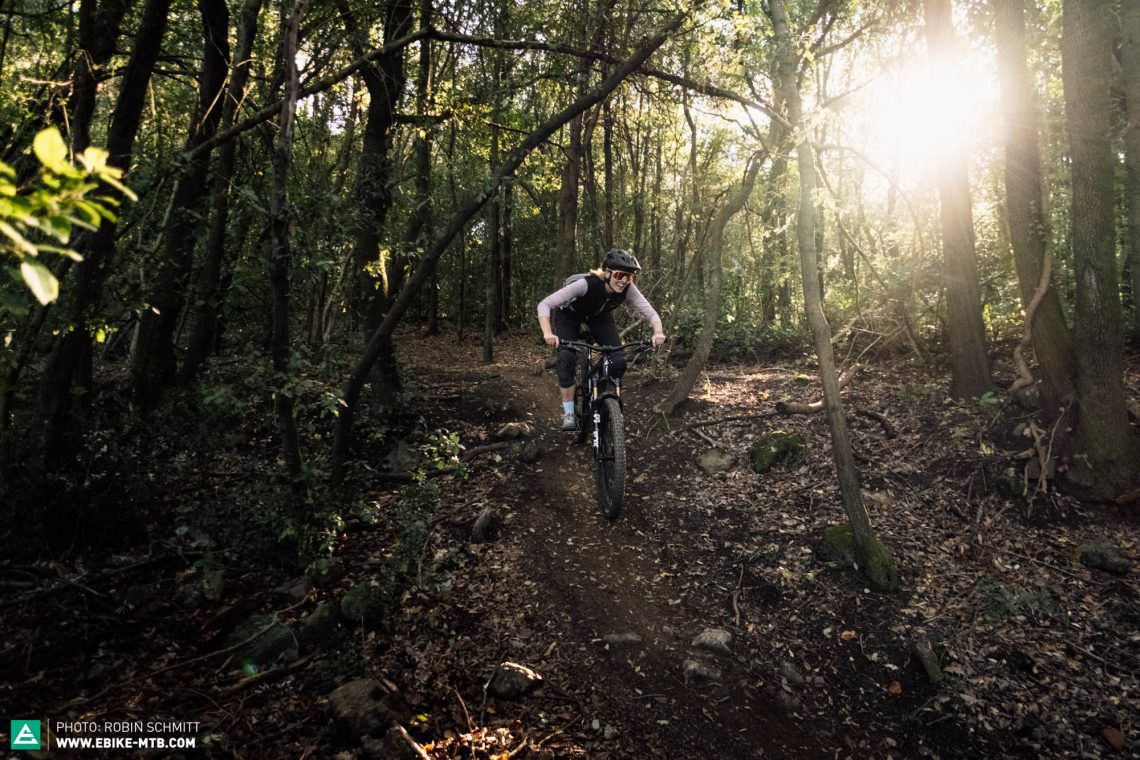
Price ≠ value – Don’t be blinded by expensive components
Of course, price plays a role for most of you. However, it’s important not to confuse price with the real value i.e. the trail performance and quality of the bike. Unfortunately, far too many people are still blinded by individual components that look good on the shop floor. However, good value for money isn’t about the sum of the parts in the spec, but how the complete package performs on the trail. You shouldn’t buy an eMTB just because you’ve heard that a wireless SRAM AXS drivetrain is great. What good are the best gears or the best motor on the trail if the suspension and geometry are no good? Even the biggest battery isn’t worth much without clever positioning and balanced weight distribution. Just because you have the range doesn’t mean you’ll have fun riding! That’s why in our group tests we look at the value of the overall package and focus on the overall performance, not individual components.
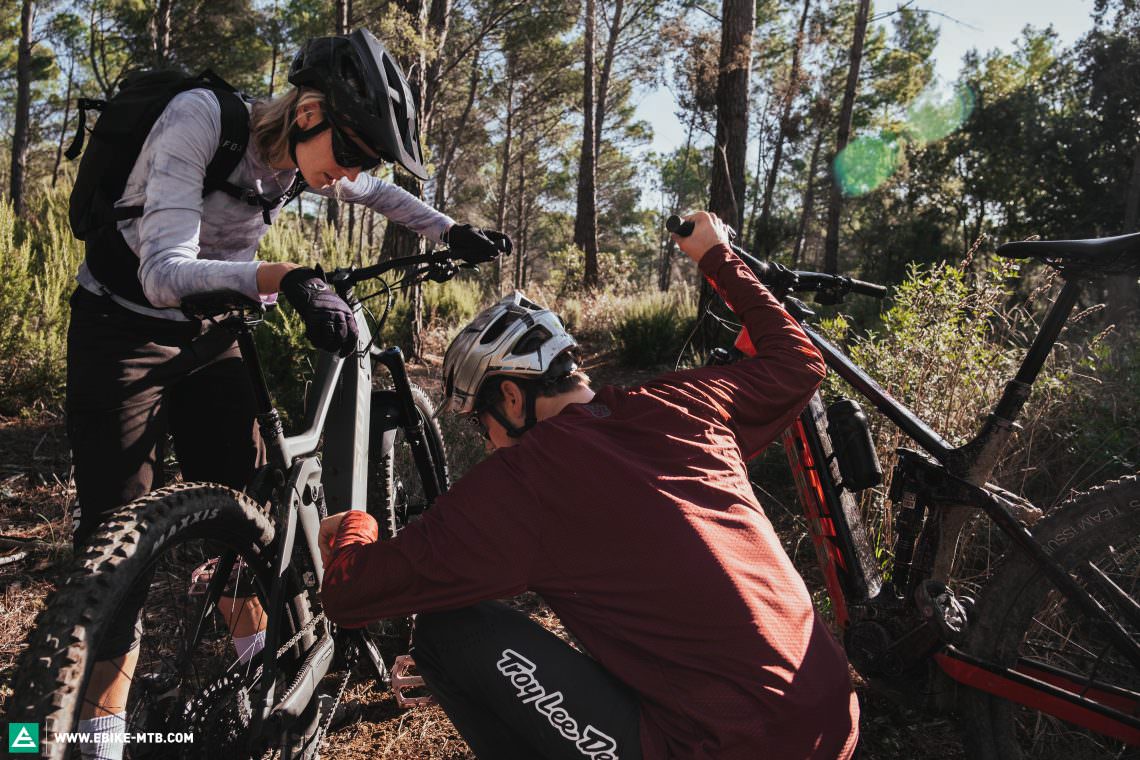
An inexpensive bike with cheaper components but a coherent overall concept can perform much better than many expensive bling-bling bikes. It always depends on the overall system.
What’s most important with an eMTB motor?
Power is nothing without control. Even though almost all motors have a rated power of 250 W, huge differences become apparent on the trail. After all, it’s rarely the average rated power that is decisive for real riding but the maximum power and torque in the respective support levels that the motors can release during peak loads. These spikes can be many times the rated power. Software also has a huge influence on the riding experience and on the differences between the motors. There are some very natural and easy to control motors like the Shimano EP8, and there are some that require attention, care and the right cadence, like the Dyname 4.0. Torque also has a big influence. As a result, the same motor can feel quite different in two different bikes: this can be due to the suspension kinematics, the geometry, the spec and the integration into the bike, amongst other things. All in all, it’s all about the right balance and set-up. Find out everything you need to know in our motor group test.


How much suspension travel does a good eMTB need?
The suspension of a full suspension eMTB is only good if it suits your own riding style. Therefore, we cannot make a general statement about the suspension travel. In general, there are big differences in the character of the models we tested, so you should be realistic about your own needs in terms of riding style and area of use when buying and be aware of the advantages and disadvantages of the respective models. Does it suit you or not? But it’s not just kinematics, components and suspension travel that are decisive. Your personal setup and the factory settings of the suspension fork and shock from the bike manufacturer also play a major role. The perfect suspension offers safety, reserves, comfort, control and enough feedback from the ground to actively manouevre the bike across the trail. If you want to delve deeper into the super exciting and complex subject of suspension, you will find a complete reference in our sister magazine ENDURO.
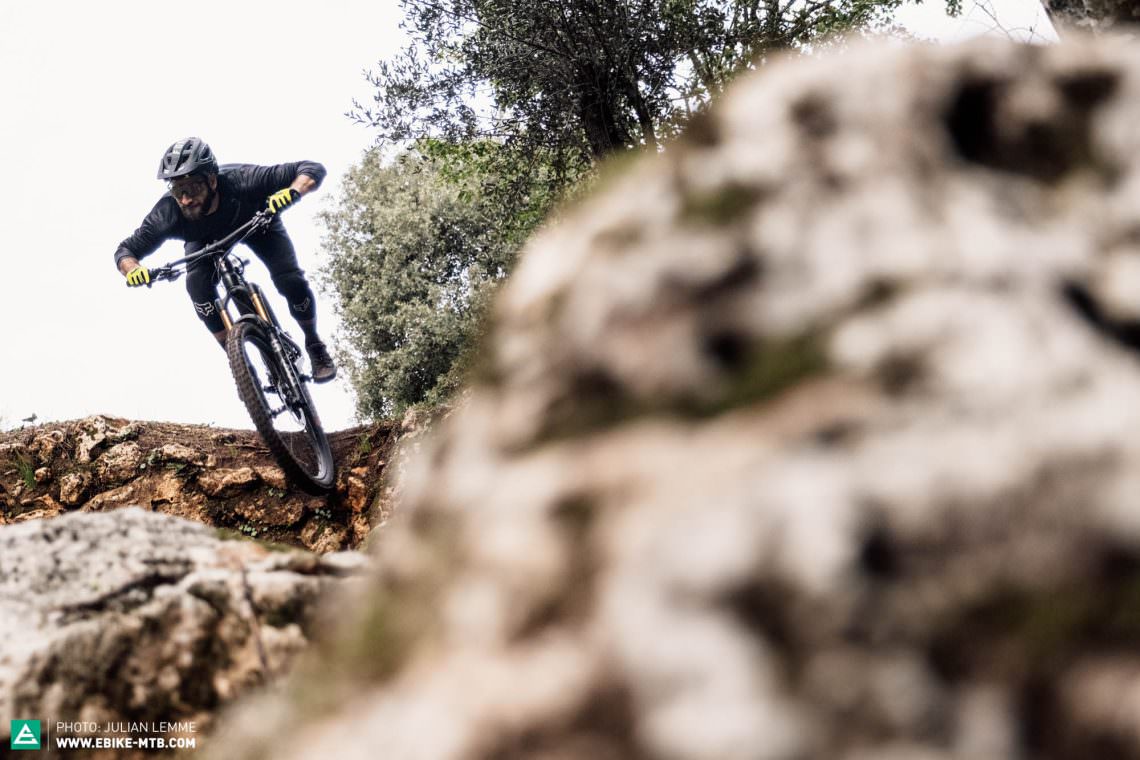
What do I have to consider with a dropper post?
Actually, the rule here is: more is more! The dropper should have as much travel as possible. Every bike from size L upwards should have space for at least 170 mm. The advantages are obvious: more drop means easier mounting and dismounting as well as more freedom of movement and safety on the trail. What is important here is what is possible, not just what is stated on paper. For example, ROTWILD use an EightPins dropper with a stroke of up to 180 mm. If you think, “Cool!”, we have to disappoint you. Due to the 470 mm long seat tube of the ROTWILD R.E375, not many riders will be able to make use of all that travel. For some of our testers it was just 160 mm! With smaller frame sizes or frames with a kink in the seat tube, insertion depth can often be a limiting factor.
Which frame size is the right one?
In general, you should follow manufacturer recommendations as they’ll have the most experience. Indeed, frame sizes can’t always be compared between manufacturers. Some modern eMTBs, such as the Norco, Rocky Mountain and Specialized Levo, rely on low seat tubes that make it possible to choose between several sizes, provided that a correspondingly long dropper post fits the bike. So, if you want to choose your bike not just according to body size but also on the basis of the handling you’re after, you should take a closer look at these bikes. If you are between two frame sizes, you usually have the choice between more stability on the larger bike or more agility on the smaller one.

This isn’t possible with the MERIDA, SCOTT and ROTWILD. They have very long 470 mm seat tubes, limiting the choice of sizes. The Specialized S-Works Kenevo SL is a special case. The insertion depth of the frame doesn’t match the seat post, which means that it cannot be completely lowered into the seat tube. In reality, the freedom of movement is limited, just like on the SCOR, despite the apparently short seat tube.
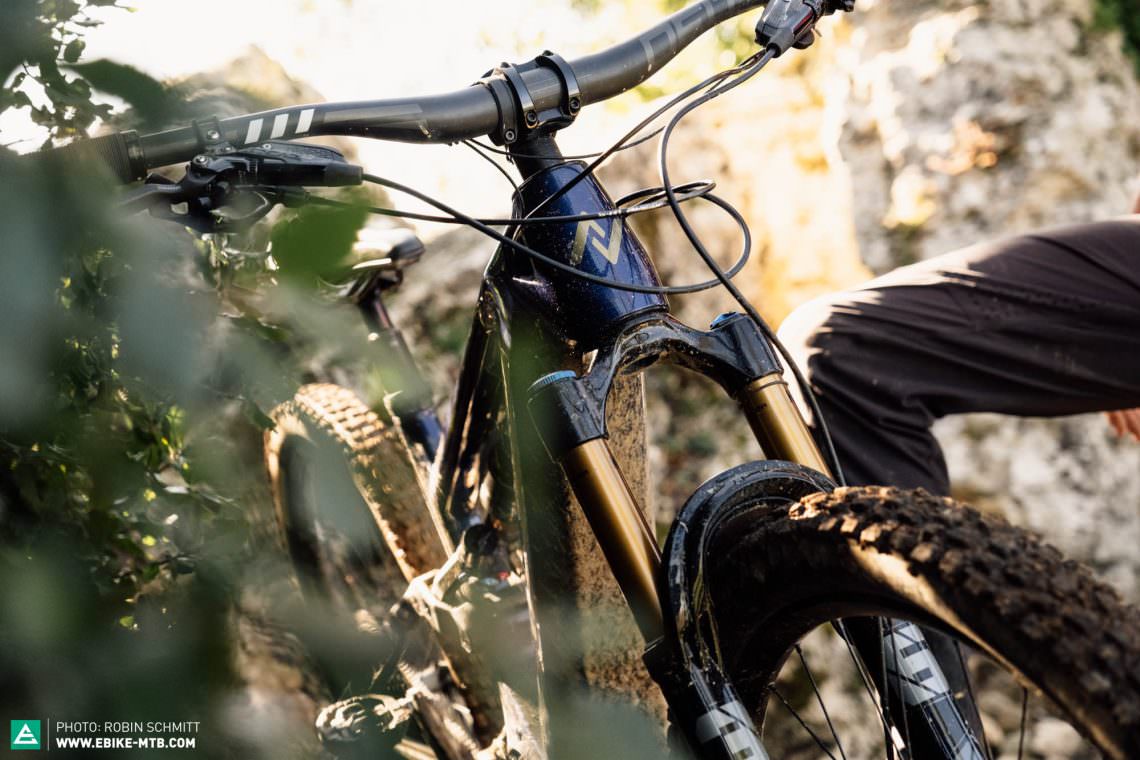
Motor tuning and smartphone apps – What’s the point?
A fast trail ride with maximum support, a long tour, commuting, an excursion with a child or dog trailer, low support to optimise the range – people use their eMTBs in different, sometimes contradictory ways, and it makes sense to be able to adjust the motor individually beyond just the available support modes. Smartphone apps that can do this are available from (almost) all motor manufacturers. On bikes with Shimano or Specialized motors, the support levels of the motor can be adjusted to suit your personal needs via the app. With the Shimano EP8 motor, you can even save two different profiles so that you can quickly switch between your configurations. The Dyname 4.0 motor on the Rocky Mountain does not have an app, but here too you can fine-tune the support levels via the display.
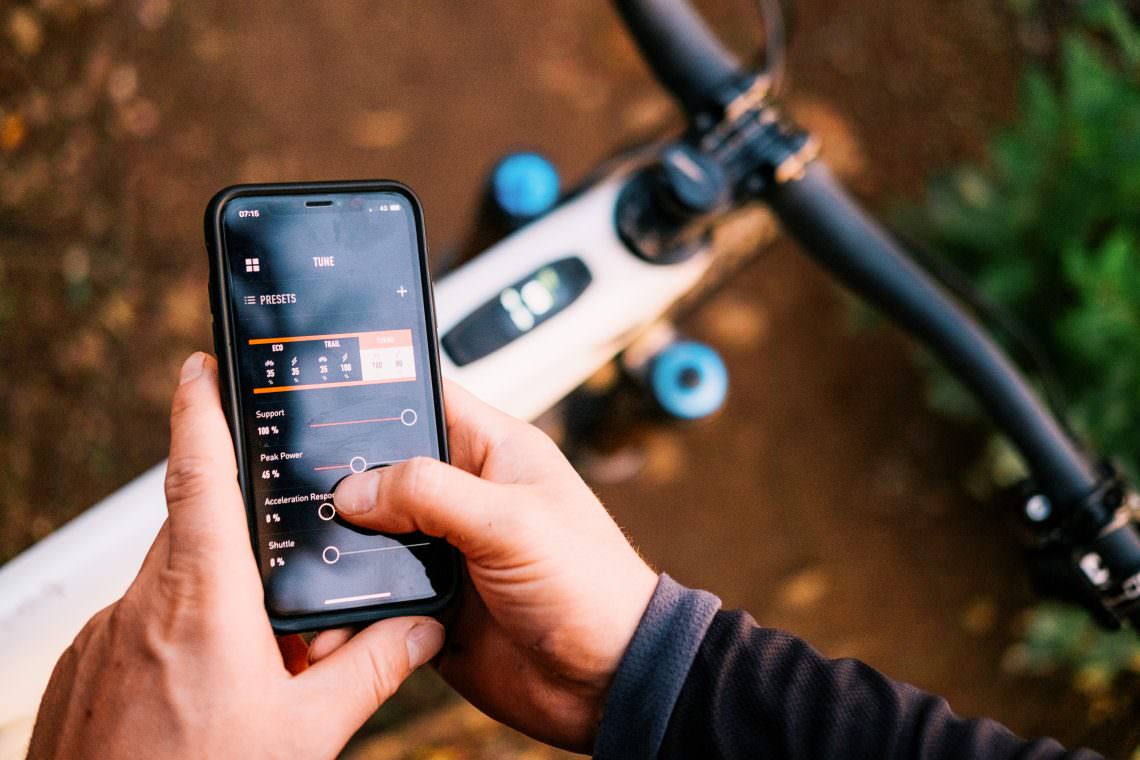
Bosch bring up the rear in this respect. With the new Smart System, customers have the option of modifying some riding modes. Unfortunately, the range of functions is significantly limited compared to Shimano and Specialized, and the added value is low. With the previous Bosch system, which is still used on the SCOTT Ransom eRIDE, you have no possibility to customise the motor. Nonetheless, thanks to the brilliant handling of eMTB mode and the easily controllable Turbo mode, we are still huge fans of the Bosch Performance Line CX motor!

What makes a good brake on an eMTB?
What counts is a good combination of modulation, stability, braking power, adjustability, heat resistance and control. For this, eMTBs should have four-piston brakes with discs of at least 200 mm. With one exception (Orbea), the bike manufacturers in this test see it the same way. Some now even use large 220 mm discs. Top! The bigger the disc, the better the control, the better the modulation on long descents and the better the resistance to fade. And arm pump after a long run is also reduced (click here for an explanation of the term
)! Although you don’t necessarily need the biggest disc rotors as a 70 kg flyweight, you will still benefit from them. The quality and type of pads also play a decisive role when it comes to powerful braking. You can find detailed information in our brake group test at our sister magazine ENDURO.
Which is the best tire for an eMTB?
Tires are elementary. They are your only contact with the ground and influence traction, braking distances and the handling of your bike, as well as contributing to its suspension. After all, before anything else, forces are transmitted through your tires. As you can see, tires are a complex issue. Rubber compound, tread, tire width and casing all influence performance and each decision has specific advantages and disadvantages. With so many different tire manufacturers and special models on the market, it’s hard for even well-versed tech nerds to keep track of everything. That’s why we prefer to provide you with some concrete tips here. For anything more, you can find all the details on the best tires for eMTBers in our tire group test of over 50 tires.
In this group test, there are considerable differences in terms of grip, steering precision, traction and puncture protection, which also influence the handling, riding experience and feeling of safety. In general, it is important to choose a tire that suits the area of use and your personal needs, so that it fits you and your bike. If you mostly ride on gravel, forest and meadow trails, a less heavily treaded tire with a thinner casing is sufficient. If you want to chase over trails at high speed, it won’t be.
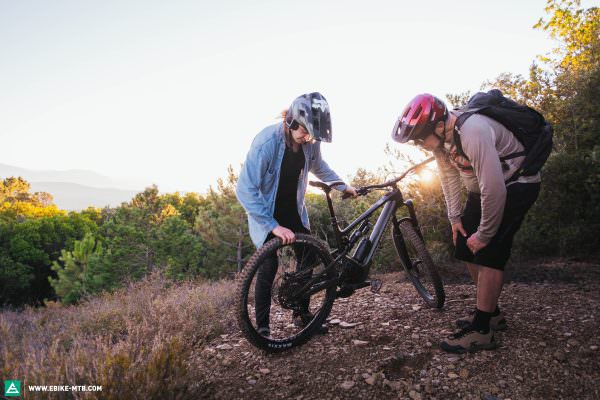
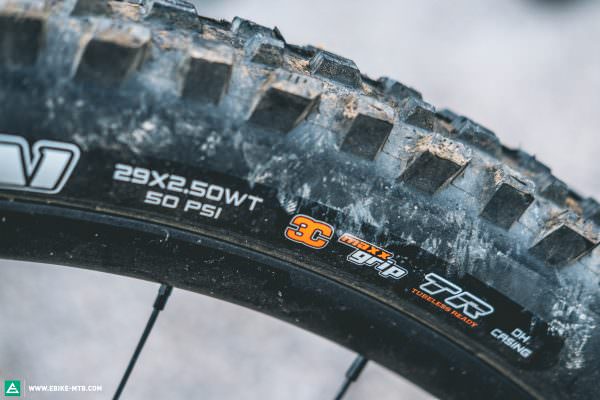
There are some clear recommendations for a trail all-rounder, which needs to work well for every rider and on every trail. Our test field only featured tires from Schwalbe or MAXXIS. On the front wheel we recommend a robust casing for puncture protection in combination with the softest rubber compound for more grip. Particularly on the front, better traction outweighs minimally higher rolling resistance. For the front we recommend a tire up to 2.6″ wide with puncture-proof MAXXIS Doubledown or Schwalbe Super Gravity casing and 3C MaxxGrip or ADDIX Ultra Soft (purple) respectively. Puncture protection is even more important on the rear wheel than on the front, so a puncture-proof casing is a must. Our tips are again: MAXXIS Doubledown or Schwalbe Super Gravity. The rubber compound can be more durable and harder for reduced rolling resistance e.g. the 3C MaxxTerra rubber compound from MAXXIS or ADDIX Soft (orange) from Schwalbe. However, all this won’t do you much good if you don’t have the right tyre pressure. You can find out how to figure it out here.
Which manufacturer offers which motor remote and what influence does this have on looks and handling?
First of all: you can’t have whichever remote you want. Motor manufacturers determine these specifications and compatibility. In terms of ergonomics, Bosch bring up the rear. The clunky remote of the new Smart System, flooded with buttons, is ergonomically one of the worst in the entire test – it is only marginally improved upon by the Purion, another Bosch option. Usability is poor, because too many buttons have to be operated with only one finger.
Rocky Mountain, Shimano and Specialized use a minimalist handlebar remote to ensure that you always hit the right button in the heat of battle. In addition, the small remotes have a cleaner look than the Bosch solution and are also less exposed on the bike. A practical side effect is that these bikes can be placed upside down, which is particularly important for models where the battery is removed from the down tube. But beware: on some bikes, the display can also be in the way.


Motor display – What options do I have?
The discrepancy between motor displays couldn’t be greater: The test field has everything on offer, from year-old displays with the sparse functionality and look of a Tamagotchi, to modern displays with numerous features, to minimalist, fully integrated concepts where the display is no longer present at all. Whichever is your favourite, it’s important that the display and remote are in a protected position and that they are intuitive and ergonomic to use. However, you don’t have a free choice with every manufacturer. Shimano provide the most options here. Do you want a minimalist display or an unobtrusive Shimano Bluetooth connector (EW-EN100 dongle)? No matter which you choose, the conversion is simple and the connectivity options remain unchanged. You can also remove the Kiox 300 display on the new Bosch Smart System, depending on your mood, and rely exclusively on the LED remote. On the bikes with Specialized and Dyname 4.0 motors, the display is elegantly integrated into the top tube. However, there is no navigation system that comes close to the Bosch Nyon in this test field. If you want a navigation aid, you should take a closer look at our navigation device group test.
EMTBs are usually noisy – Which bike is the most quiet?
Clack-clack-clack, bzzz, bzzz – you’ve probably heard it before. All bikes with Shimano EP8 or Bosch Performance Line CX motors have a design-related motor rattle when the chain is loaded (under suspension compression), which usually occurs on the downhill or on flat or rough ground. The perceived noise depends strongly on the resonance of the frame and varies from bike to bike. With the exception of the Dyname and Brose motor in the Levo, all motors in the test field rattle, some more, some less, loudly. Only the Specialized Levo is truly quiet downhill. Sadly, on the Rocky Mountain, the battery rattles. There are also differences between the individual motors and bikes when it comes to motor noise under full load. Here you have to be in the right cadence range for the motor, to minimise the noise. The good news is that trained bikers’ ears will be able to tell whether the motor is in its comfort zone or is about to fade out, like when you’re about to stall your car.
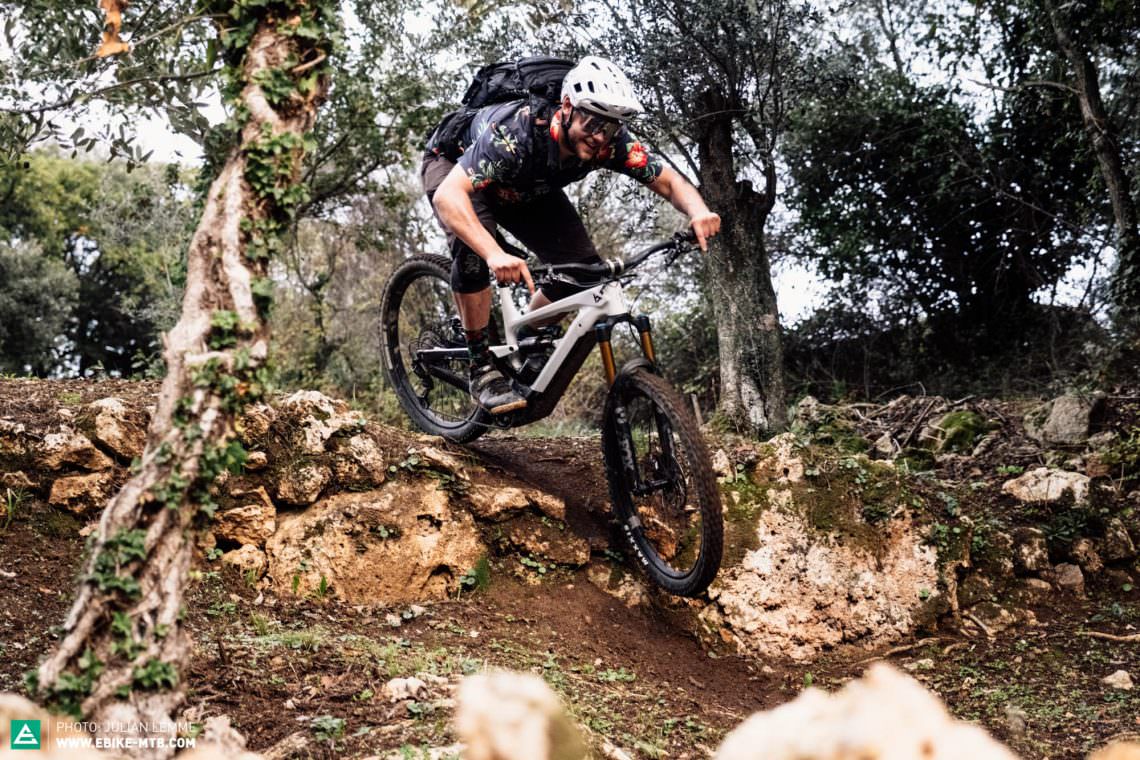
What do the maximum permissible weight and the maximum load of an eMTB mean?
Like every car, every bike has a maximum permissible weight, which is specified by the manufacturer to ensure that the bike and all its components can withstand loads up to this rating. However, if you adhere to the maximum payload of some bikes, we are almost all too heavy to ride them! After subtracting the weight of the ebike from the maximum permissible weight, the load remaining for rider and equipment is sometimes just 95 kg. YT have the highest payload in the test field at 127 kg. But FOCUS, MERIDA and Orbea also offer a considerable margin with 124 kg and 117 kg respectively. The Norco Sight VLT C1 and Rocky Mountain Altitude Powerplay C70 have some catching up to do. They have a maximum load of just 94 kg and 95 kg respectively. The problem: if you exceed the maximum permissible weight, this can have consequences for warranty and guarantee claims. Many manufacturers are already working on increasing these limits but there is still a lot to be done in terms of maximum permissible weight and more clarity is urgently needed.
At 95 kg, am I already too heavy for my eMTB? That can’t be true!
Put some money aside – How to avoid expensive repairs and have long-lasting fun with your new bike!
Unfortunately, just because an eMTB is expensive doesn’t mean it will last longer – if you don’t take care of it. EMTBs are delicate, high-tech devices that need regular maintenance and care. Otherwise you can’t expect longevity or lasting performance, nor can you expect lasting riding pleasure! Besides chain and drivetrain maintenance, your brakes, tires and suspension are the most important candidates for being serviced regularly. For example, FOX recommends a complete service of the FOX 36 or 38 at annual intervals or after 125 hours of use – whichever comes first. As you can see, just an annual inspection isn’t enough. That’s why you should also consider the maintenance costs for service parts and consumables. We’ve summarised what this can cost per year and what you need to bear in mind.
Part 6: What’s the best eMTB of 2021? Tops & flops, winners and losers of the group test
The search for the best eMTB was exciting and a close call. The future of eMTBs doesn’t just look promising, it also looks versatile. Here are the tops, flops, winners, losers and further recommendations.
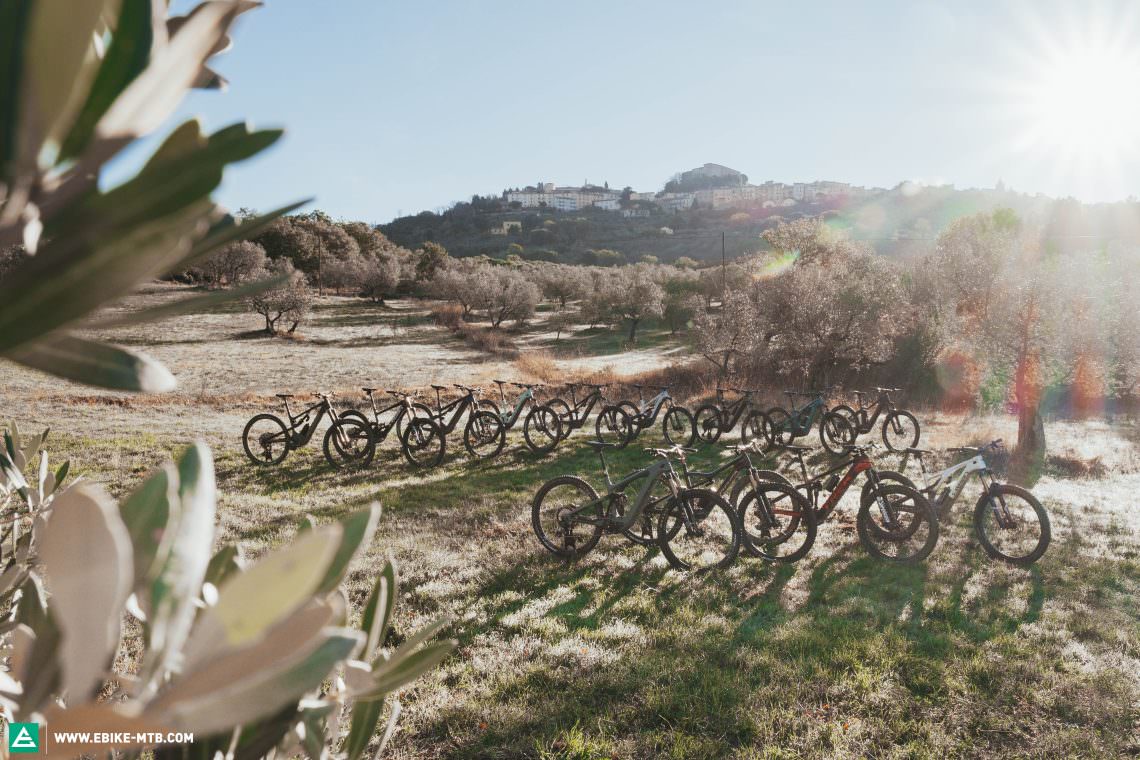
The tops and flops of our eMTB group test
Tops
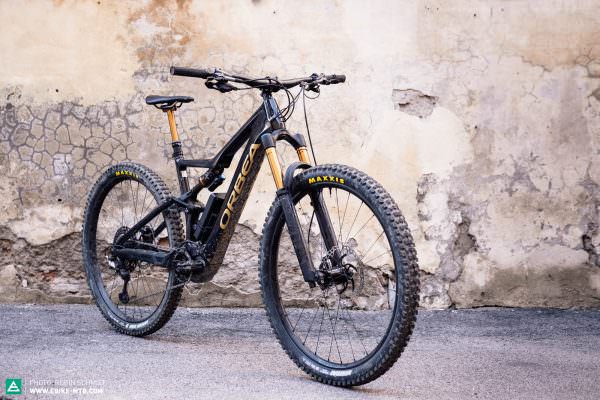
BBikes with sufficient motor power and a small (main) battery like the Orbea Rise and Rotwild R.E 375 can combine uphill fun with excellent trail handling and outstanding downhill performance. The Orbea Rise isn’t just better than most of the bikes downhill, it also beats a lot of them uphill too.
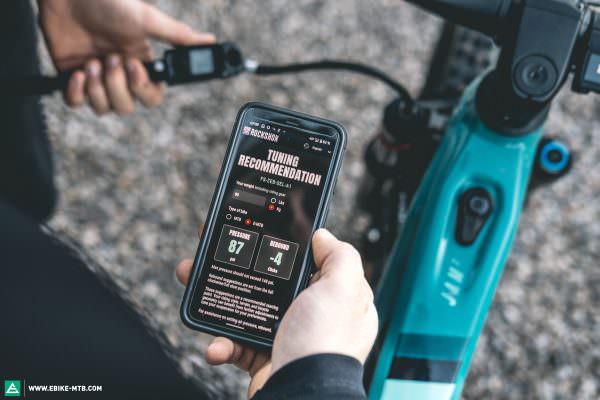
With their own setup guide, YT, Norco and Trek help you with the suspension. There’s no easy way to find a base tune from which you can tinker. Nonetheless, at least RockShox and FOX both help you with the fork in their setup guides.

With a higher load rating, heavier riders can also have fun without having to worry about warranties.YT win the race at 127 kg, but FOCUS, MERIDA and Orbea also let you hit the trails at 124 kg and 117 kg respectively.
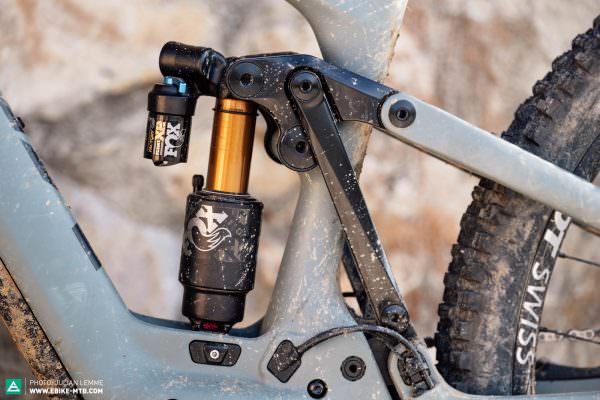
No rear end in the test works as smoothly and capably as that of the Yeti 160E T1. The bike has traction, support and pop and can never be unsettled. A successful design, which even lets you fine-tune the progression!

220 mm disc rotors front and rear ensure decent brake power that can be reliably controlled while preventing arm pump. Unfortunately, FOCUS are the only manufacturer to use this combination. Together with the SRAM CODE RSC brakes, the FOCUS undoubtedly delivers the best braking in the test.

Robust casing like MAXXIS DD or Schwalbe Super Gravity offer all these characteristics. Unfortunately, too few bikes in the test come fitted with them.
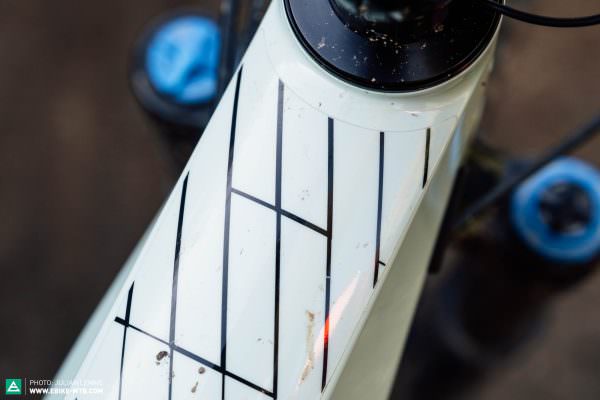
Do you want to make your eMTB frame unique? With Orbea, Trek and SCOR that’s not a problem. Orbea and Trek offer numerous colour combinations and custom paint jobs while SCOR uses personalised graphic films. Doesn’t matter how it’s done: unique = cool! And some brand don’t even charge more for the pleasure.

A frame bag like on the FOCUS, mouting points for a tool strap like the Norco and SCOR, make it easy to have everything necessary, for repairs on the trail without having to carry a rucksack. We think this is great and would love to see more!
FLOPS
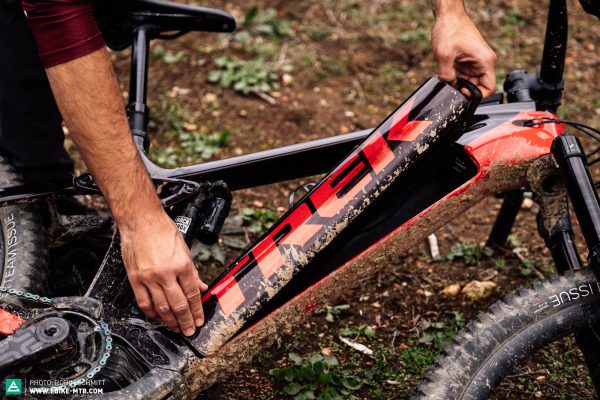
A rattling battery isn’t just annoying but can also have some serious consequences. In the Trek Rail 9.9 it’s problematic because the battery noticeably clatters against the frame in braking bumps, on roots or during landings, creating vibrations that unsetlle the Rail 9.9 and can be felt at the bars.
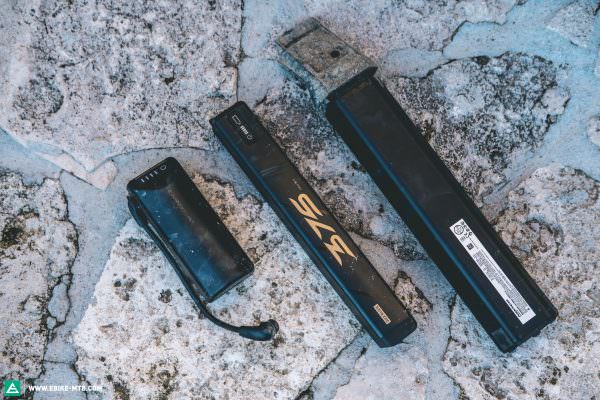
The test revealed: 720 Wh or more are too much for an eMTB. The high weight and weight distribution kill the fun for anyone who wants to lift the front wheel or catch some air from time to time. Modular battery concept with a smaller internal and additional, external reserve battery, like the Orbea Rise, are the better choice.

A number of manufacturers spec the harder MaxxTerra rubber at the front. That sacrifices grip and means you have to weight the front more to generate sufficient traction.
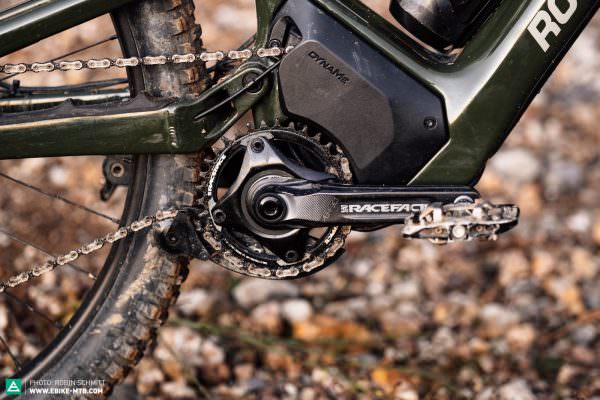
The Rocky Mountain has the most powerful motor in the test. However, to make the most of it, you’ll have to keep your cadence high during long climbs as it might overheat otherwise. That’s a pain, whether it’s technical sections or relaxed rides.

The Norco suffers from one that’s really annoying. Touch your foot lightly against the cover of the magnetic charge plug can lead to a loose connect that starts the motor up again.

The too small 180 mm rotors on the Orbea Rise M-Team overheat quickly and result in unnecessary arm pump.
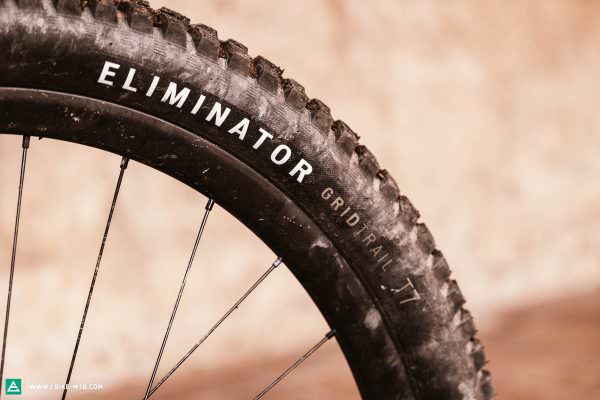
Specialized and Trek fit puncture-prone tires with a weak casing, combined with carbon wheels. Bottom out the rim and it will quickly be broken and have to be swapped.
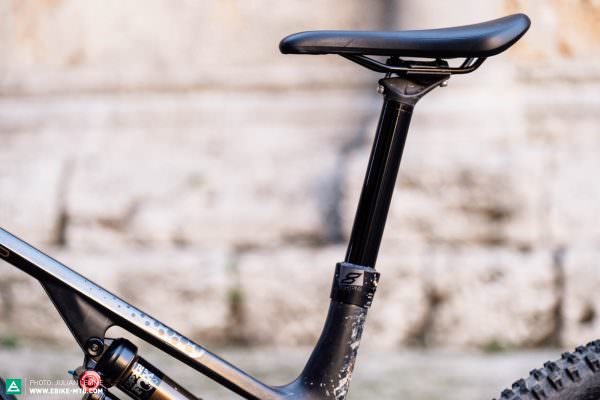
The EIGHT PINS Dropper Post on the Rotwild R.E375 offers 180 travel on paper. In practice, the length of the seat tube limits this massively. Some testers were only able to use 160 mm.
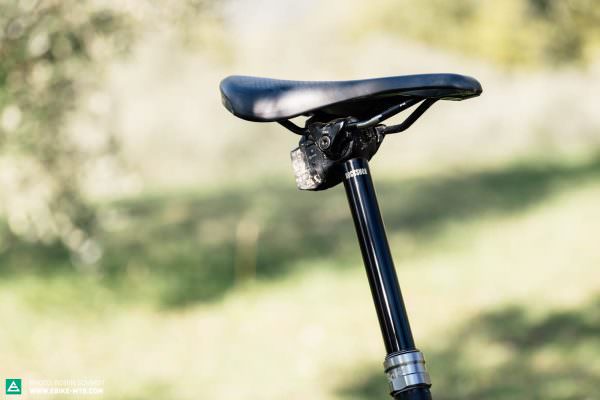
The dropper on the Specialized Kenevo SL can’t be lowered completely into the frame. With shorter legs, that might mean you can’t make full use of the dropper’s travel.
The best eMTB of 2022? The winners, losers and other recommendationsn
How did the individual eMTB in this group test fare? For a better overview, we present all 13 bikes and their tops and flops below. We start with the FOCUS JAM2 7.0 for € 7,799. It is the best touring bike in the test field and, after some suspension tuning, also a good all-rounder that will appeal to both beginners and advanced riders with its easy going and good-natured handling. However, it reveals weaknesses in steep terrain and at high speed. Last year’s test winner i.e. the best eMTB of 2021, the MERIDA eONE-SIXTY 10K, went into this test almost unchanged and demonstrated that it is still a strong all-rounder. However, it could no longer defend its title. Other bikes are capable of covering an equally wide range of applications while also outperforming the MERIDA in individual specialisations.
The Norco Sight VLT C1 offers an enormous range with its 900 Wh battery and Shimano EP8 motor. Together with the high level of comfort, it is a great bike for touring riders. With a smooth ride and easy handling, it is suitable for beginners as well as high-speed junkies. However, the poor reliability of the battery system, as well as the poor integration have room for improvement. The Rocky Mountain Altitude Powerplay C70 is the winner in terms of motor power. While it has a specific use in mind with its unique character, it does what it is aimed at well. It is the right bike for sporty downhill junkies who don’t want to lose any time on the forest tracks on the way to the start of the toughest trails.
Despite its small 375 Wh battery, the ROTWILD R.E375 ULTRA has a Shimano motor with plenty of power. On the trail, it scores points with its light-footed but demanding handling, which will suit experienced flow trail riders best. However, in technical terrain and at high speeds it is severely limited by its spec. Rotwild could tease out much more trail performance with different choices. The SCOR 4060 Z ST XT impresses with its touring capabilities, the customisable paint protection films and the fun ride on flow trails. However, there are some compromises when it comes to stability through fast trail sections and traction. It is also not the right choice for beginners due to its demanding handling.
SCOTT sent in the SCOTT Ransom eRIDE 910, which is almost unchanged for 2022. Last year’s Best Buy and the cheapest bike (€7,199) in the test field, it was unable to defend the title. It still provides experienced bikers with good reserves, satisfies beginners with its intuitive handling and is also a comfortable touring bike, but ultimately cannot keep up with the stronger competition as an all-rounder.
The Specialized S-Works Turbo Levo is a good all-rounder that, with a change of tires and tune of the suspension setup, can reveal its full potential. It is unbeaten in technical uphill terrain and also feels most comfortable downhill on challenging and fast trails. It is also the only bike in the test field that is truly quiet downhill. In terms of connectivity and customisability of the motor system, it sets the tone in the test field together with the Specialized S-Works Turbo Kenevo SL. As a Light eMTB with the lowest motor output (35 Nm) in the group test, the Kenevo SL is an exotic bike and has no chance of winning the test as an all-rounder, but it still has its advantages. It impresses with the best system integration, high stability on fast descents while maintaining manoeuvrability and agility, as well as its modular battery concept. If you are prepared to work harder uphill, you will find a bike that really delivers on the way down.
The YT DECOY MX CORE 4 is equipped with the Shimano EP8 motor in combination with the small 540 Wh battery, which was introduced at the beginning of 2019. In a world of growing battery sizes, it is not an outdated oddity but manages to bridge the gap between all-round and Light eMTBs. It is fun to ride on flow trails and the suspension and high touring comfort are also a strength. All in all, it is a good all-rounder with sacrifices to the range and high speed.
The best eMTB of 2022: Yeti 160E T1
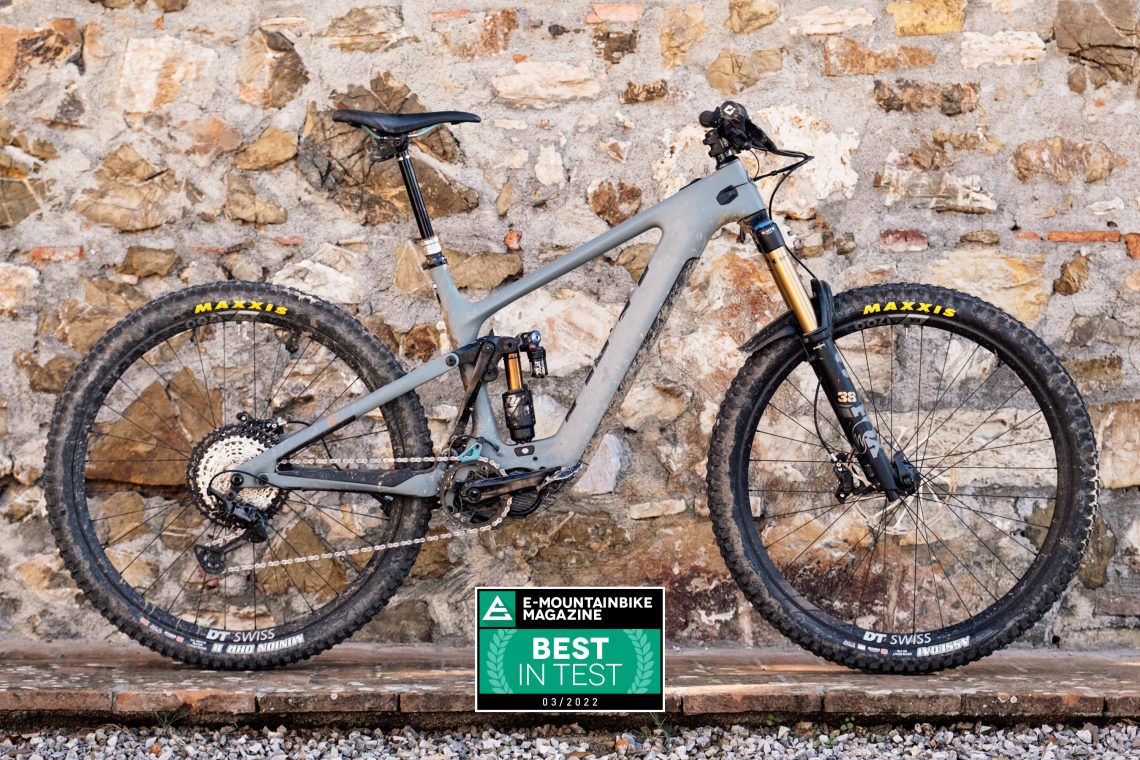
We’ve been looking for the best all-rounder that won’t let you down on any trail, whether uphill or downhill, and offers a carefree package of performance and riding fun for all rider types and skill levels. No bike manages to combine almost irreconcilable opposites as well as the YETI 160E T1. YETI have combined all their geometry and suspension know-how in a great overall package powered by a Shimano EP8 motor and 630 Wh battery, creating a bike that is the new benchmark in trail performance, for everyone from beginners to pros. It is the perfect all-rounder that covers the whole spectrum from touring to bike park visits, scores with enormous riding performance and convinces with almost perfect and sensible equipment, even if it comes at a hefty price of € 13,790. The YETI 160E T1 is the deserved Best in Test and thus the best eMTB of 2022. Congratulations!
Our eMTB Best Buy 2022: Orbea Rise M-Team

The Orbea Rise M-Team is a master of all disciplines and secures our coveted Best Buy. With its sophisticated modular battery concept with a 360 Wh battery and 252 Wh range extender and throttled, 60 Nm Shimano motor, combined with an individual look, almost perfect spec and outstanding riding performance, the Spanish trail rocket convinces across the board. Whether on flow trails, technical singletrails, in the bike park or on a tour, the Orbea Rise M-Team is a true all-rounder that inspires in every discipline. Thanks to its strong riding performance and intuitive handling, it is suitable for beginners as well as experienced trail acrobats. The lightweight eMTB with 150/140 mm suspension travel and 29″ tyres always remains easy to control and elicits fun in every situation. It not only covers a huge range of application but was also the strongest competitor to the test winner, the YETI 160E T1. It didn’t quite have what it takes to win the test, but thanks to its great price-performance ratio, the Orbea Rise M-Team deservedly wins the Best Buy!
The loser of the test: Trek Rail 9.9

The Trek Rail 9.9 leaves the test crew with very mixed feelings. On the one hand, it convinces with its chic and customisable paint job, good climbing characteristics on technical uphills and great suspension. On flow trails, it also scores points with its poppy suspension and balanced riding position. However, we did not like the integration of the new Bosch Smart system and its 750 Wh battery. The 750 Wh battery can be removed to the side in typical Trek fashion. However, to integrate the long battery in the down tube, a cutout over half a metre longer is necessary. Trek attempts to prevent the battery from rattling with foam padding in the down tube. Unfortunately, it still rattles at high speeds through braking bumps, over edges and on landings, creating vibrations that can be felt in the bars and that upset the Rail’s composure. If you only ride it at moderate speeds or on easy trails, you won’t feel much of this. On the other hand, if you want to ride the eMTB, which Trek themselves describe as super-capable, on fast, demanding and technical singletrails, you should stay away from the € 13,599 Trek Rail 9.9.
All bikes in this test:
FOCUS Jam² 7.0 (Click for review) | MERIDA eONE-SIXTY 10K (Click for review) | Norco Sight VLT C1 (Click for review) | OrbeaRise M-Team (Click for review) | Rocky Mountain Altitude Powerplay C70 (Click for review) | Rotwild R.E375 ULTRA (Click for review) | SCOR 4060 Z ST XT (Click for review) | SCOTT Ransom eRIDE 910 (Click for review) | Specialized S-Works Turbo Levo (Click for review) | Specialized S-Works Turbo Kenevo SL (Click for review) | Trek Rail 9.9 XX1 AXS (Click for review) | Yeti160E (Click for review) | YT DECOY MX Core 4 (Click for review)
Did you enjoy this article? If so, we would be stoked if you decide to support us with a monthly contribution. By becoming a supporter of E-MOUNTAINBIKE, you will help secure a sustainable future for high-quality cycling journalism. Click here to learn more.
Words: Jonas Müssig, Rudolf Fischer, Julian Schwede Photos: Julian Lemme, Robin Schmitt, Peter Walke









